King Tut
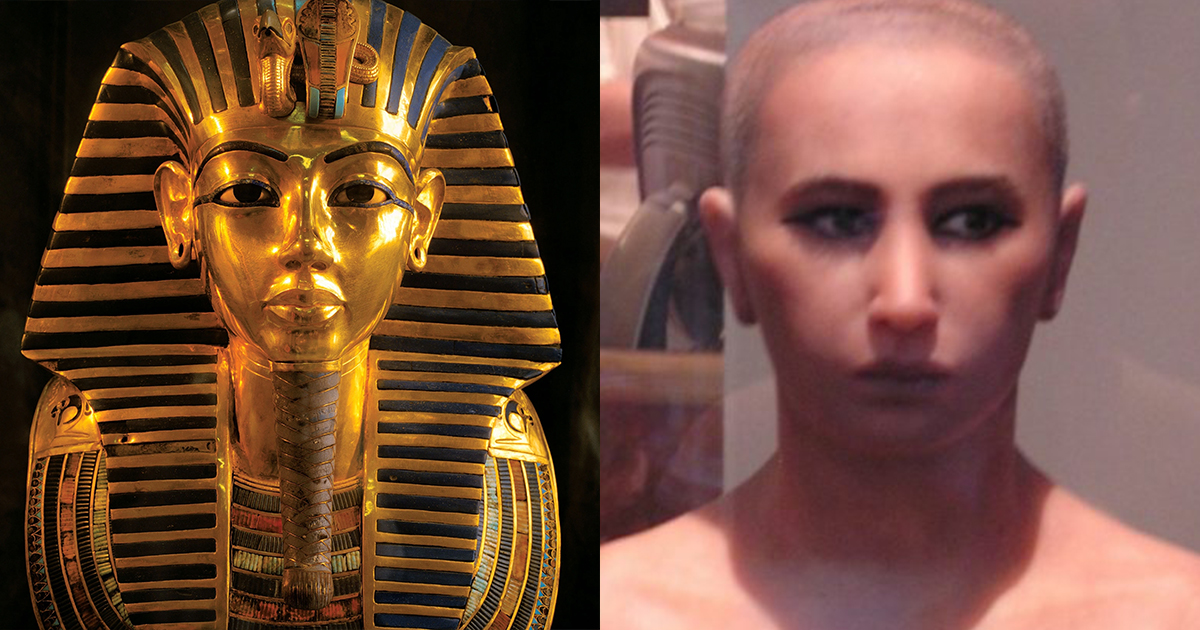
Tutankhamun was a pharaoh who ruled Egypt from 1332 to 1323 BC. In 1922, British archaeologist Howard Carter discovered Tutankhamun’s tomb and its treasures, which had been sealed for over 3,200 years. Although King Tut’s golden burial mask shows a young man with strong, idealized features, thanks to high-tech 3-D imaging, the truth has finally been revealed. The pharaoh had a club foot, alongside other deformities, most likely as a result of inbreeding.
Emperor Nero
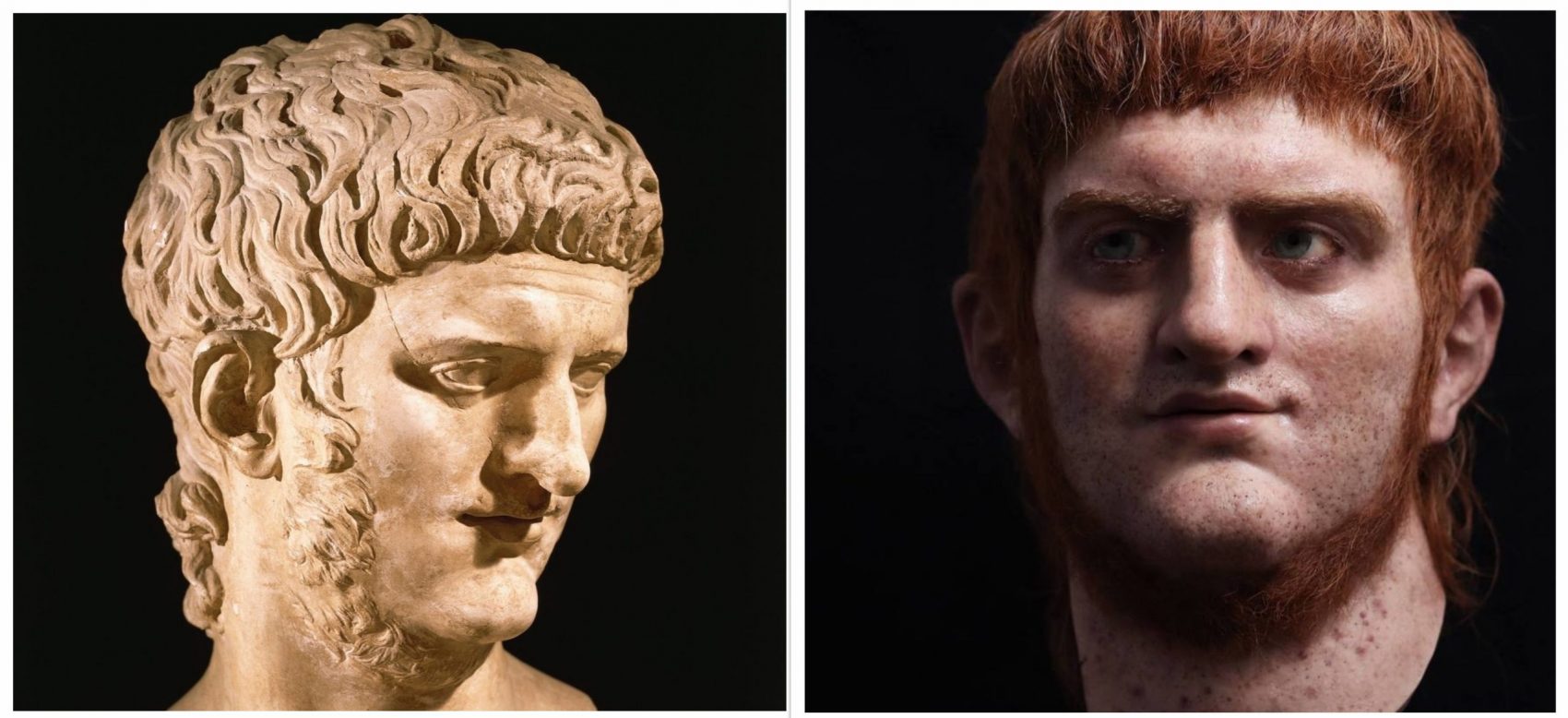
Nero became the Roman Emperor in A.D. 54 when he was only 17 years old. In his fifth year as emperor, he had his mother killed and later appeared in public as an actor and charioteer, which undermined his authority. Nero ruled for nearly a decade and a half, developing a reputation for tyranny, murderous cruelty, and decadence. In 2019, Spanish artists made a lifelike rendering of the emperor based on descriptions, drawings, and busts. They captured his attributes perfectly, including the chinstrap and arrogant smirk.
Nefertiti
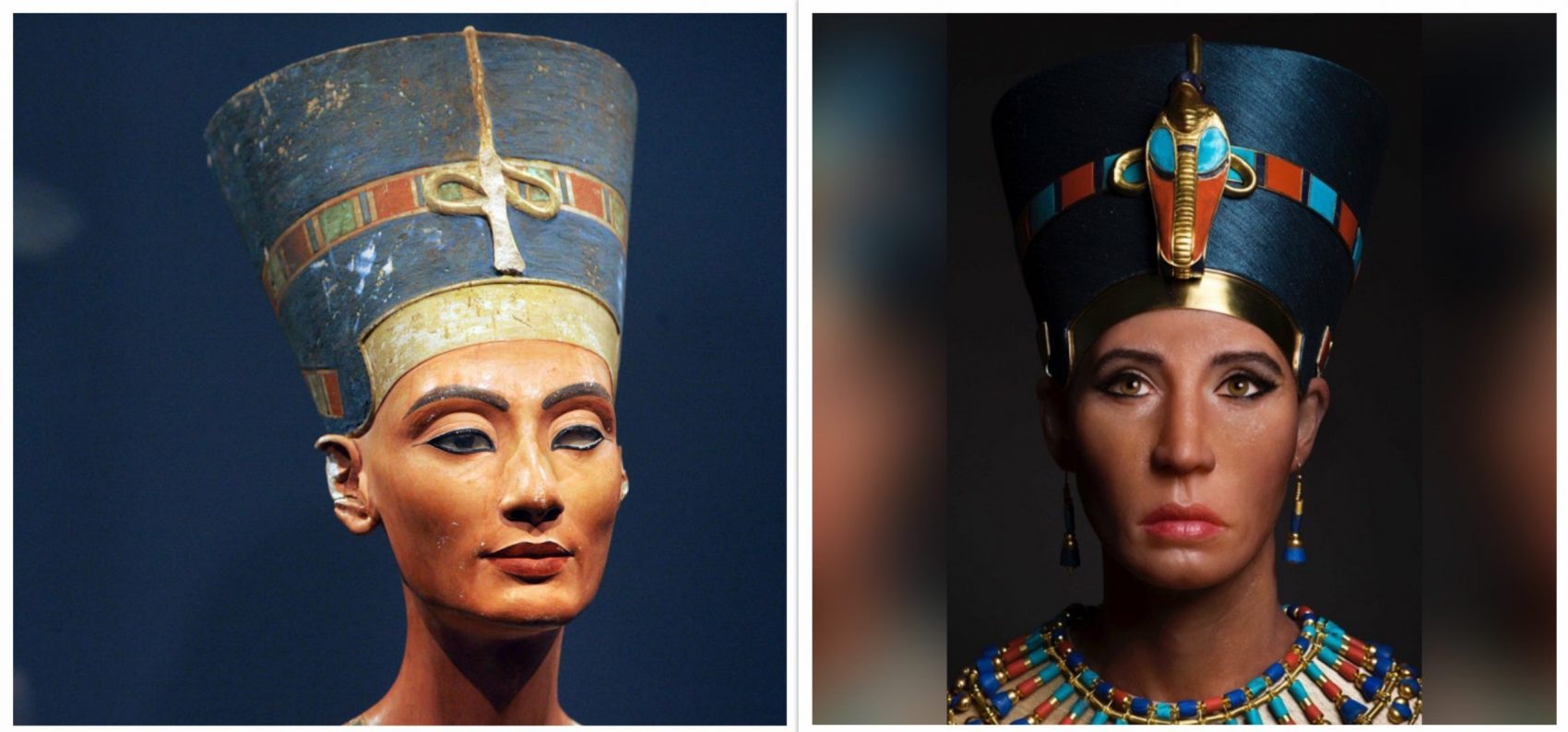
Queen Nefertiti, wife of Egyptian Pharaoh Amenhotep IV, is one of history’s most intriguing figures. Her beauty was immortalised in a bust that was discovered in 1912 and is now considered one of the finest works of art from ancient Egypt. Her name translates to “the beautiful one has come.” In 2018, Travel Channel’s show Expedition Unknown used 3D imaging technology to create a digital map of the “The Younger Lady,” a mummy believed to be Nefertiti. However, upon the release of the portrait, many people questioned whether its artist accurately represented the Egyptian queen’s skin tone.
Robert The Bruce
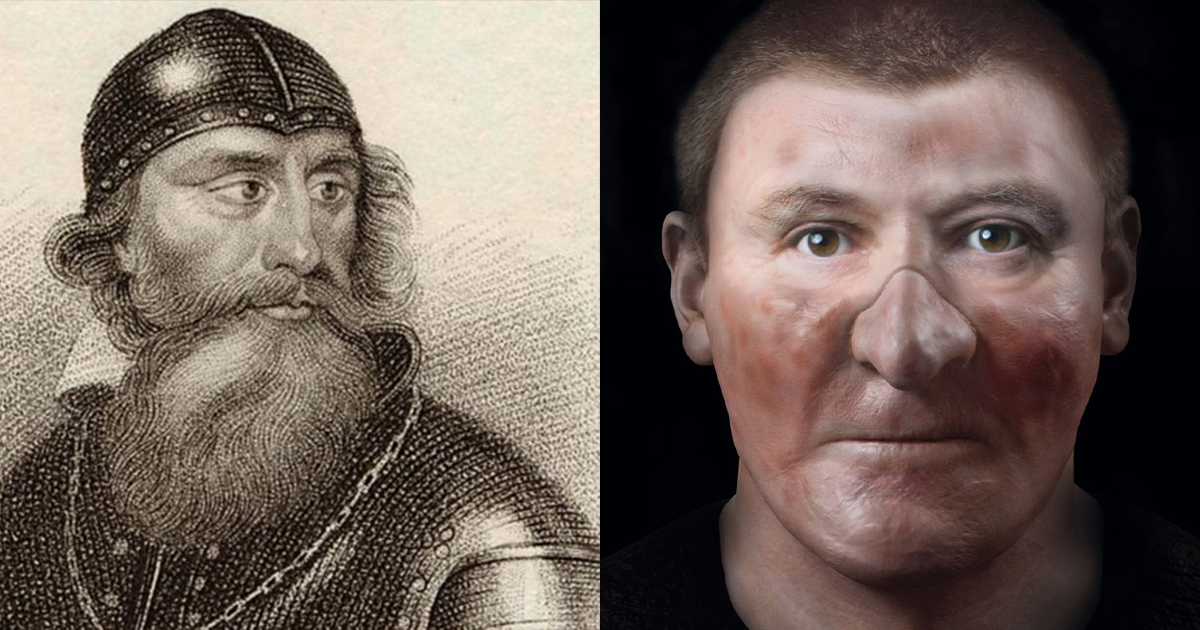
Robert the Bruce, called Robert I, was King of the Scots from 1306 until 1329. He fought against the English and secured the independence of Scotland with a successful guerrilla war, most famously winning the Battle of Bannockburn in June 1314. Although Robert the Bruce is not depicted in any contemporary works of art, researchers at the University of Glasgow used casts from the skull believed to belong to the king of Scots while studying his remains.
Julius Caesar
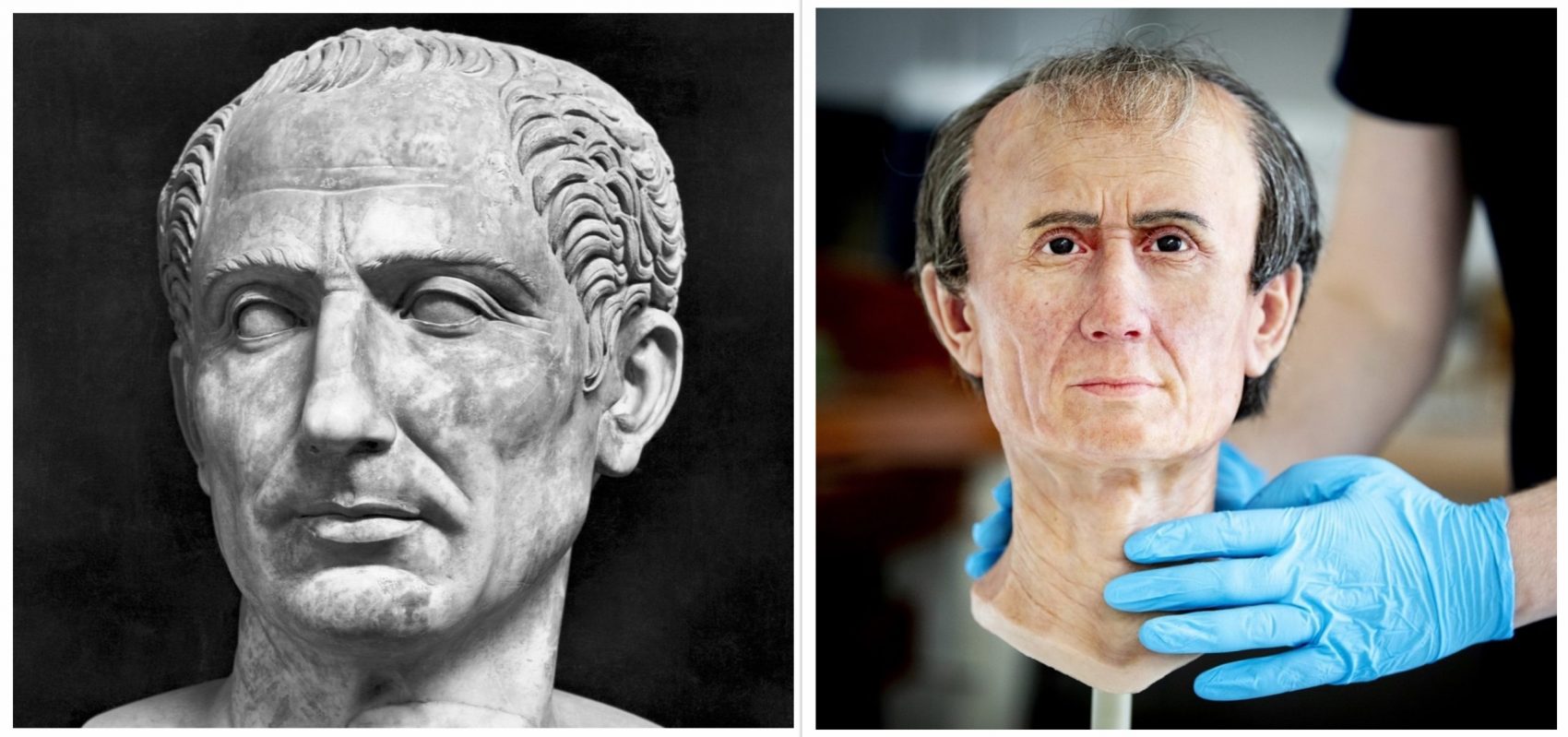
Julius Caesar was a war general, politician and one of the most influential men in Roman history. After refusing to step down from command to avoid arrest after invading Britain, Caesar re-entered Roman Italy from Gaul under arms, which lead to a civil war. After winning the civil war, Caesar began reigning as dictator, starting governmental and social reforms and even granting citizenship to people who lived in the Roman Empire’s farthest regions. Caesar’s marble portraits were scanned using 3D technology, which made it possible to create this 3D reconstruction of his head.
Cleopatra
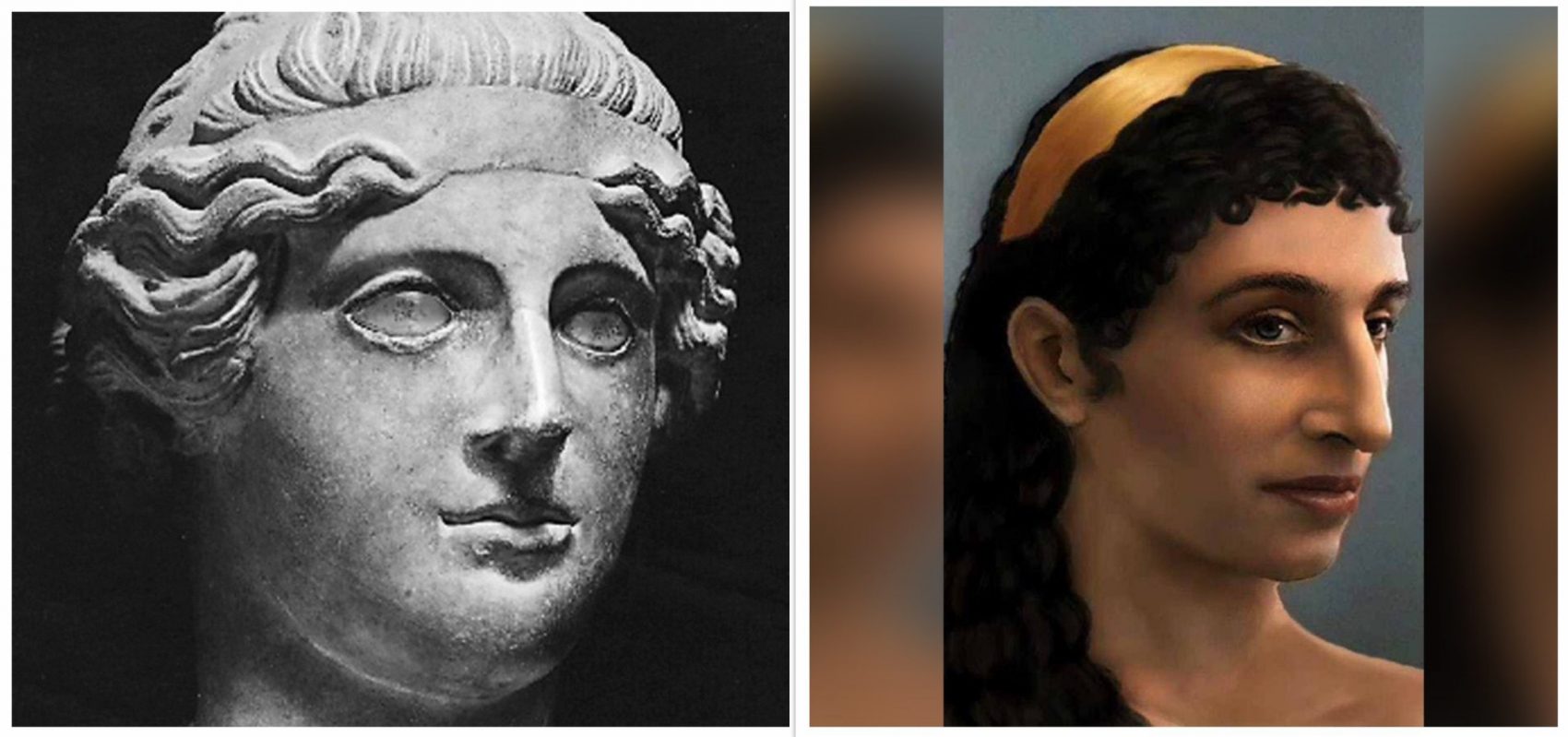
Cleopatra ruled Egypt for almost three decades. We know her to have been intelligent, charming, and witty, and many contemporary depictions of the Queen in popular culture highlight her beauty and seductiveness. She had love affairs with two of the most powerful Romans – Julius Caesar and Mark Antony, both of whom were charmed by her beauty. To determine what Cleopatra looked like, 3D artists used existing sculptures and portraiture. The Egyptian queen’s masculine features and prominent nose might be surprising to some who watched Elizabeth Taylor’s onscreen portrayal.
Queen Elizabeth I
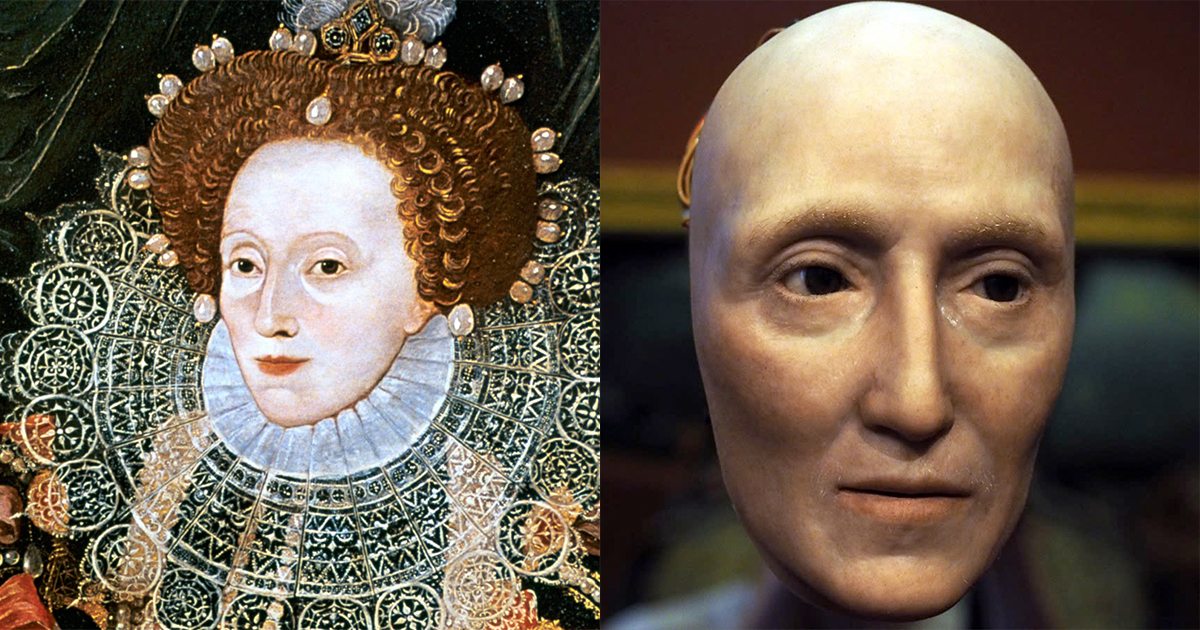
Queen Elizabeth ruled over Ireland and England from 1558 until 1603. Her father was King Henry VIII, and her mother was his second wife, Anne Boleyn. However, the marriage was annulled when Anne died, so Elizabeth was regarded as illegitimate. Because of this, it took a few years for her to ascend the throne. Although many paintings depict what Elizabeth looked like, artist Mat Collishaw brought things to another level when he created this hyper-realistic animatronic mask.
William Shakespeare
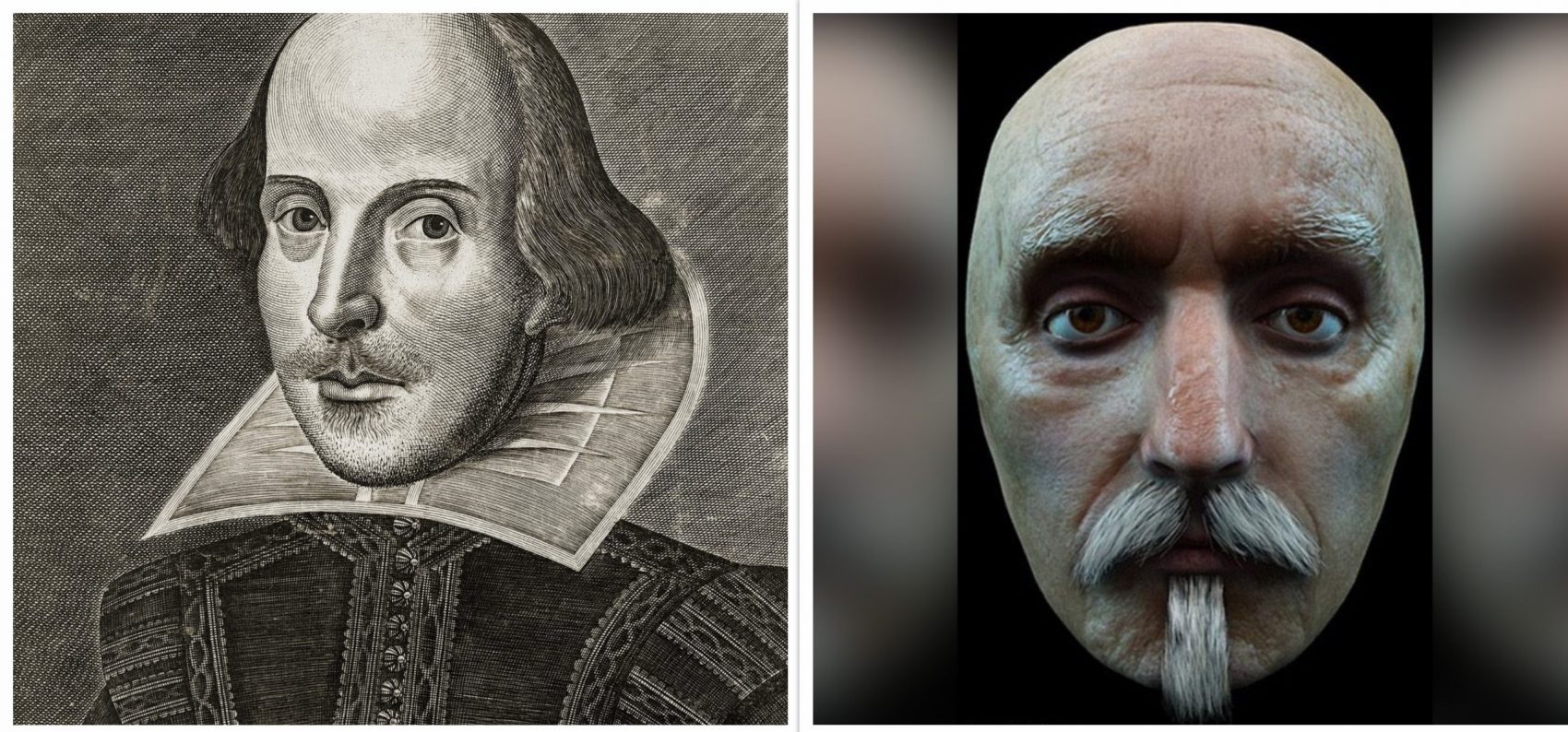
When you think of Shakespeare, you probably have a particular image of the Bard in mind: a receding hairline, heavy-lidded eyes, a thin moustache and long, wavy hair. However, this famous image was actually drawn several years after the author’s death in 1616, and no existing portrait shows definitively what Shakespeare looked like in real life. In 1975, Professor Hildegard Hammerschmidt-Hummel discovered what she believed to be the death mask of William Shakespeare. In 2010, Dr. Caroline Wilkinson used this mask to make a rendering of what Shakespeare might have looked like.
George Washington
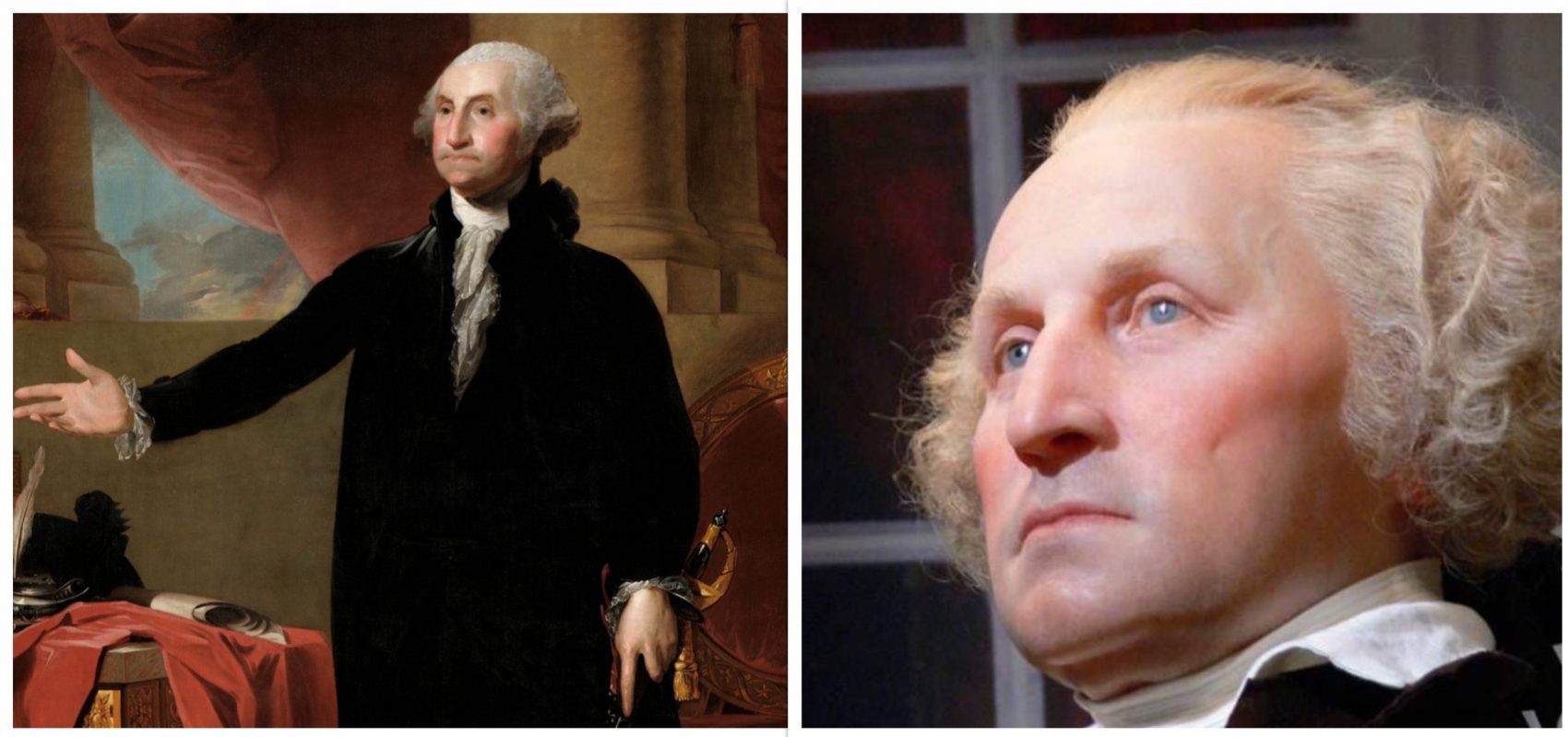
George Washington was the first President of the United States from 1789 to 1797. A highly respected historical figure in America, the Founding Father is found on American currency, in numerous government buildings and museums all over the country. Researchers used detailed portraits of Washington, as well as painted ones, to create this computer-generated picture and prove that many of his portraits are quite authentic.
Mary, Queen of Scots
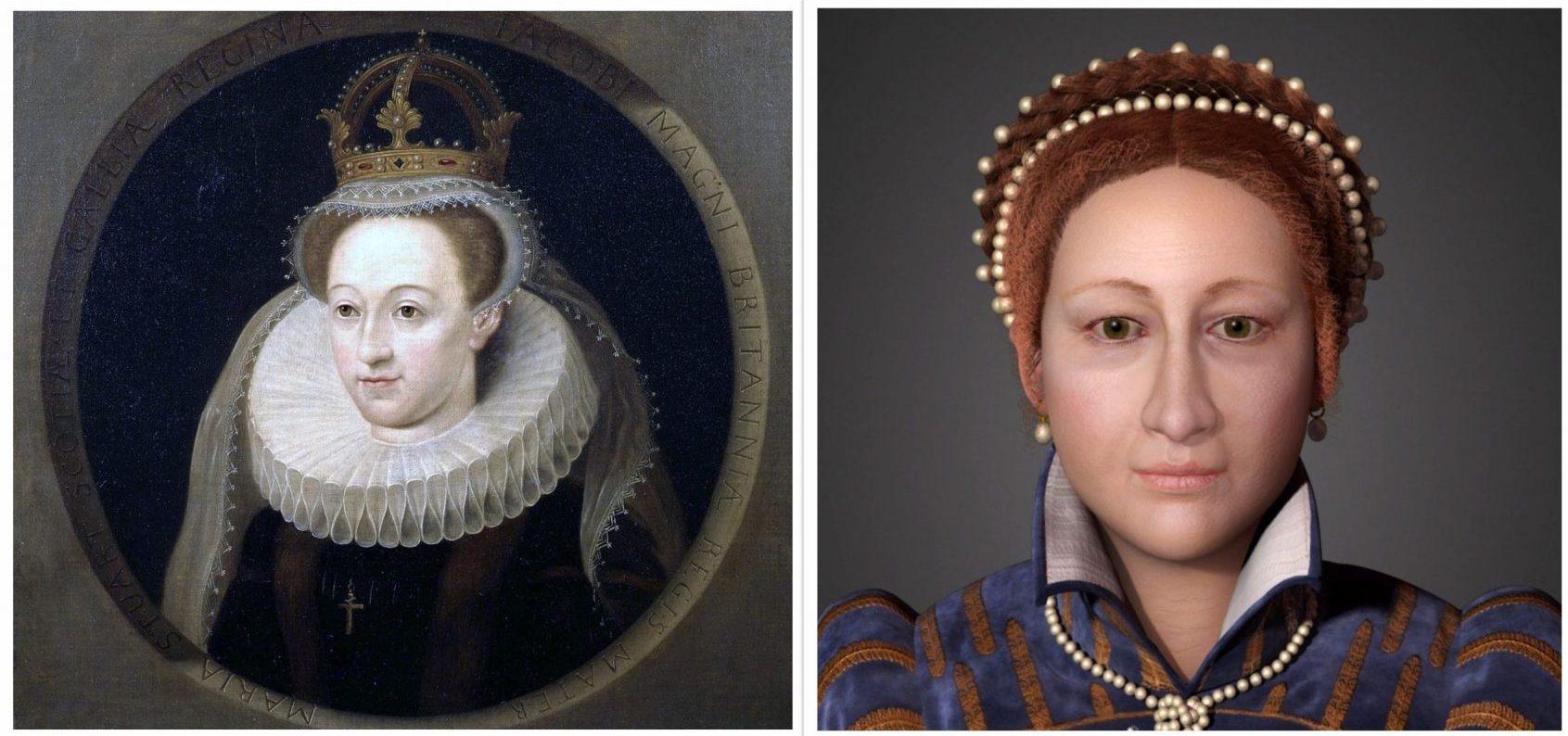
Mary Stuart was born in December 1542. Her father died the day after her birth, making her the Queen of Scotland only six days after her birth. She spent most of her childhood in France, but returned to Scotland in 1559 and became queen at the age of 18. Professor Caroline Wilkinson used drawings and paintings to create a 3D face of the Queen. She also drew upon biographical info to avoid highly stylized depictions.
Richard III
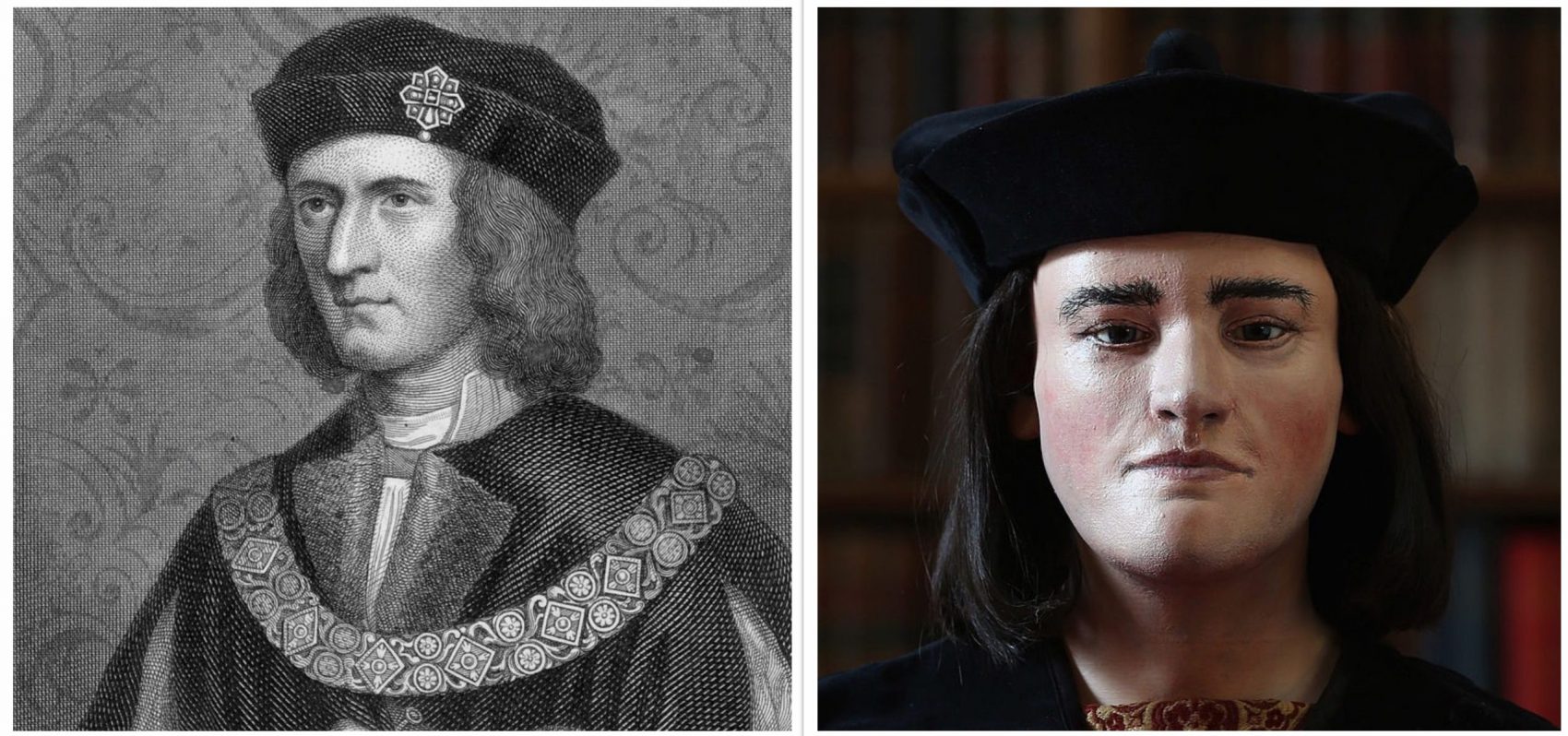
King Richard III only ruled England for two years, but his reputation has been less than honorable as time has gone by. Shakespeare portrayed him as a tyrant in his play and he was eventually replaced by the Tudors. It wasn’t until 2012 that it was possible to produce an image of Richard III, as his remains were lost after his death. A team from Dundee University in conjunction with archaeologists from Leicester University created this image of what Richard might have looked like.
Meritamun
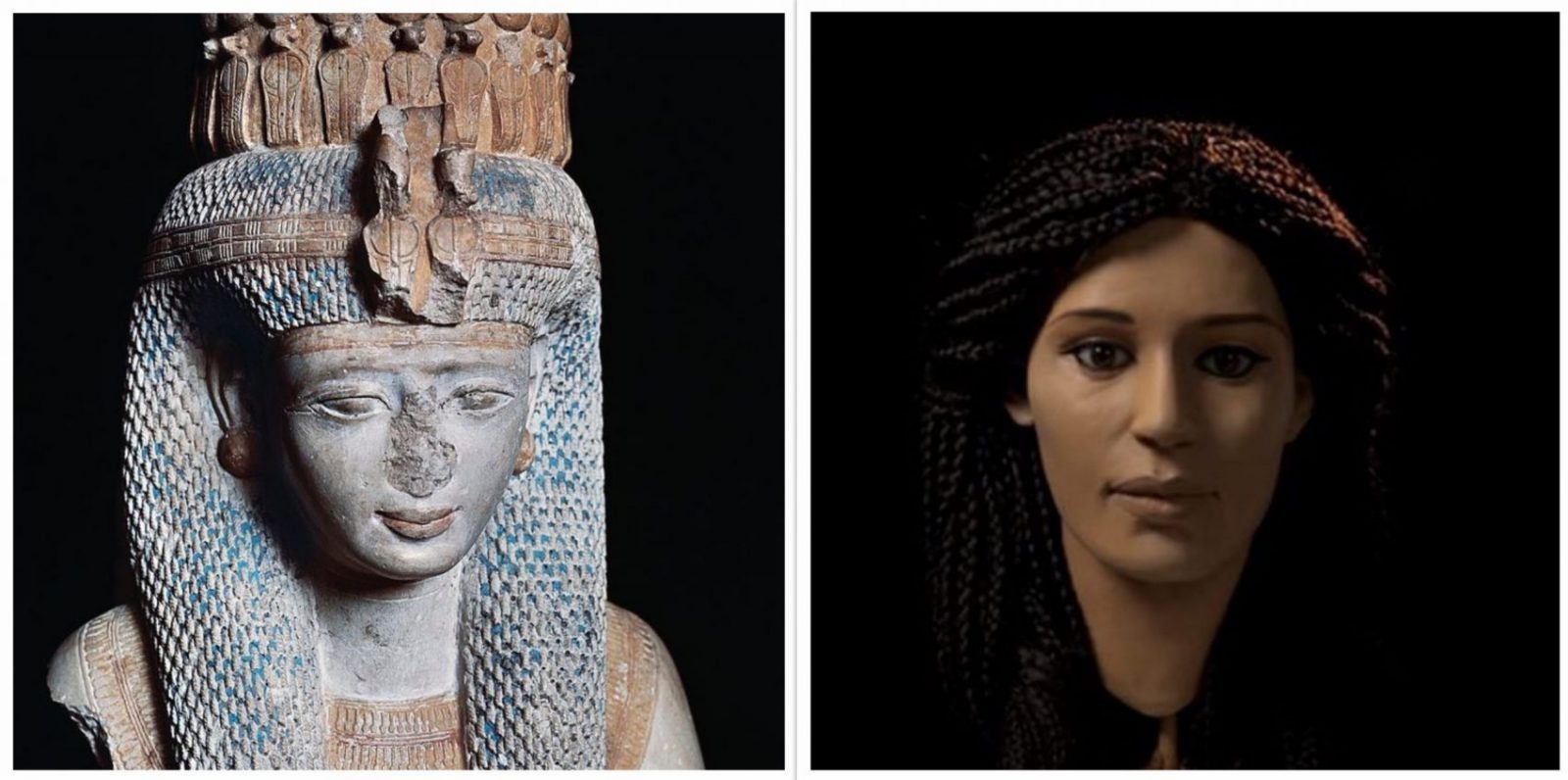
Meritamun was a queen of ancient Egypt. She was one of the daughters of Ramesses II and upon the death of Nefertari, she took on the role of the Great Royal Wife. Meritamun’s burial place was the Valley of the Queens in Egypt. The queen was believed to have been between 18 and 25 years old at the time of her death, but historians still debate the cause of her untimely demise. Researchers from the University of Melbourne introduced her to us when they looked through their archives and discovered her skull.
Jesus Christ
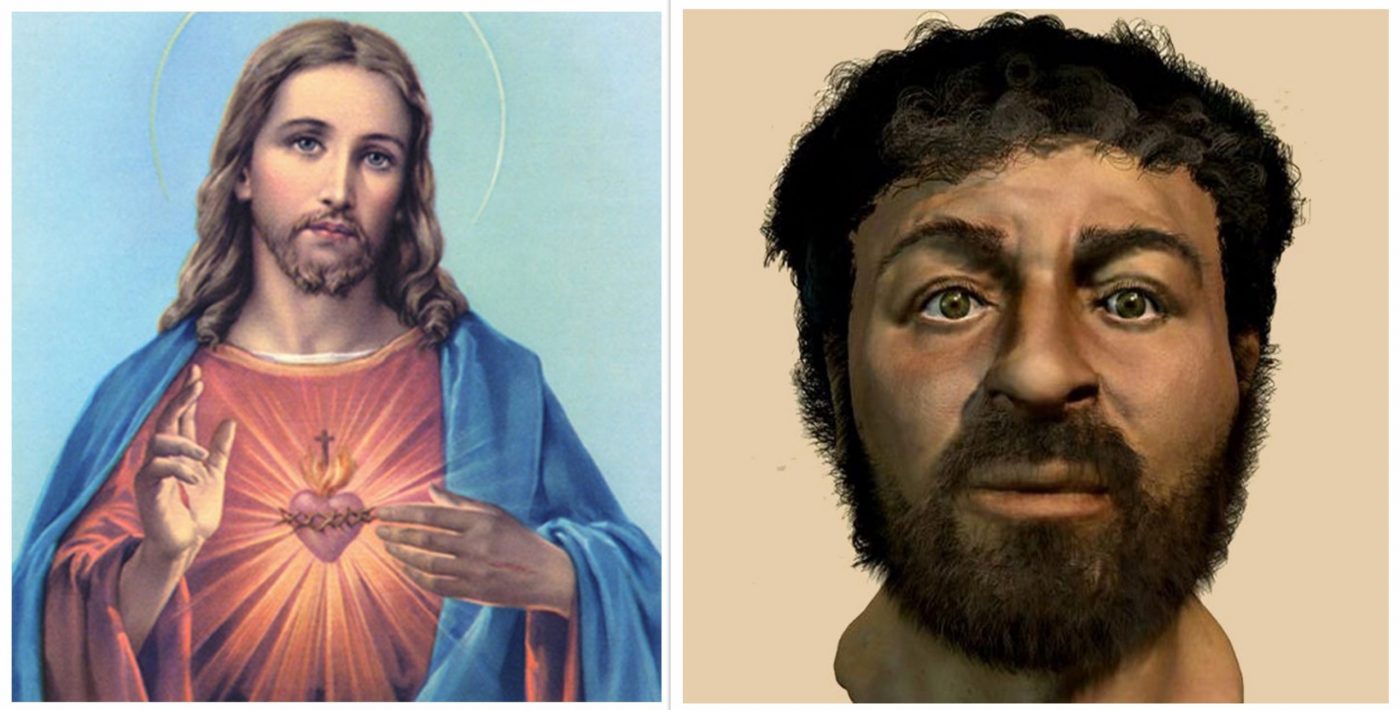
Through colonialism and the spread of Christianity, Jesus has been portrayed as a white man with long, brown hair and a beard in Western paintings. However, most anthropologists and scientists agree that this is not what Jesus actually looked like. In 2001, Richard Neave, a British expert in forensic facial reconstruction, used computer programs and an Israeli skull to create an image of what he thought Jesus would have looked like. Like others in Judea and Egypt, where Jesus briefly lived, the historical Jesus likely had dark hair, tan skin, and brown eyes, a far cry from the figure depicted in European art.
Marie Antoinette
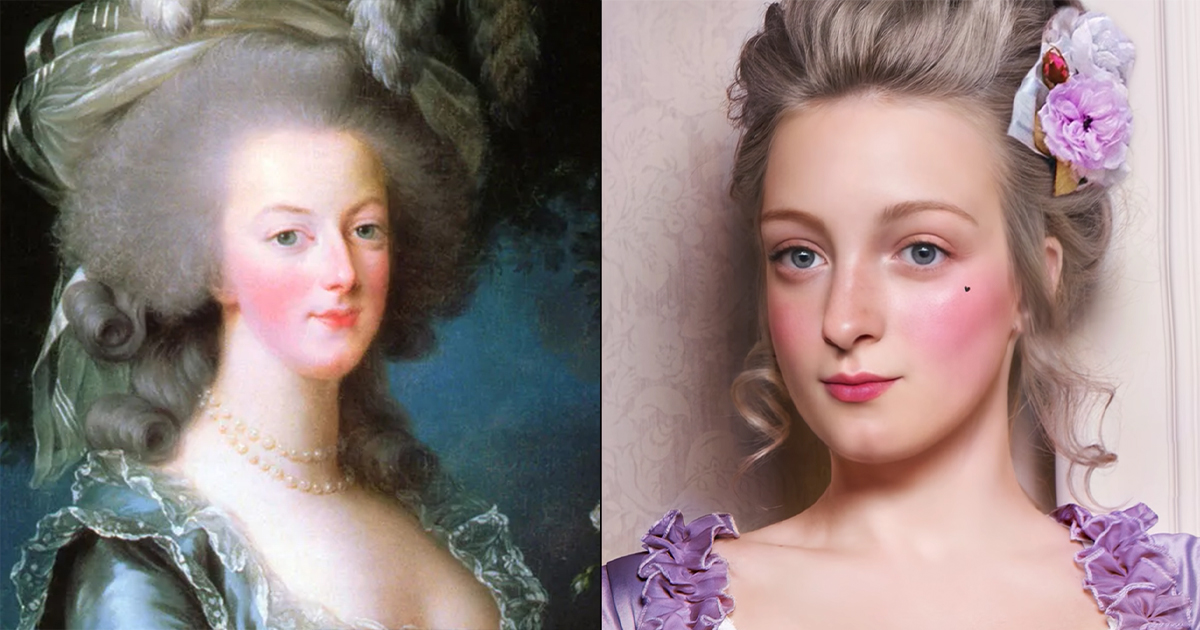
Marie Antoinette was born in 1755. She became the Queen of France in 1774, but because of political instability, she was beheaded in 1793. Marie was praised for her style and extravagance as a ruler, but she was known for being quite naïve and often used as a pawn in political alliances. Miss Marie Antoinette may have looked like a fashion misfit in today’s world, but technology can give us a glimpse of what she might have been like.
The Lord Of Sipan
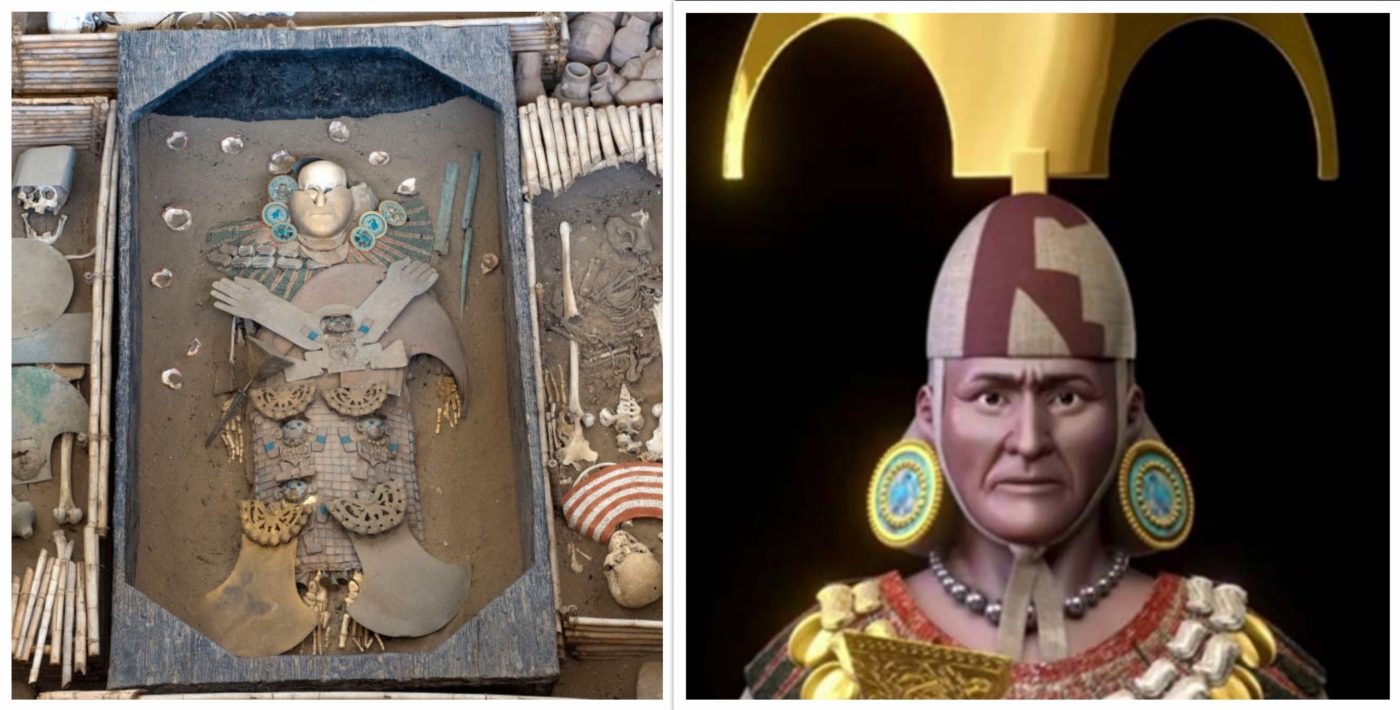
The Lord of Sipan was the first of several Moche mummies discovered in Peru in 1987. He was originally found by archaeologists, who have called his discovery among the most significant of the 20th century, comparable to King Tut’s tomb. The forensic team had a difficult job, especially since the pressure of the sediment broke the skull during excavation. Luckily, modern technology helped them reconstruct the 96 separate pieces of the broken skull.
Saint Anthony
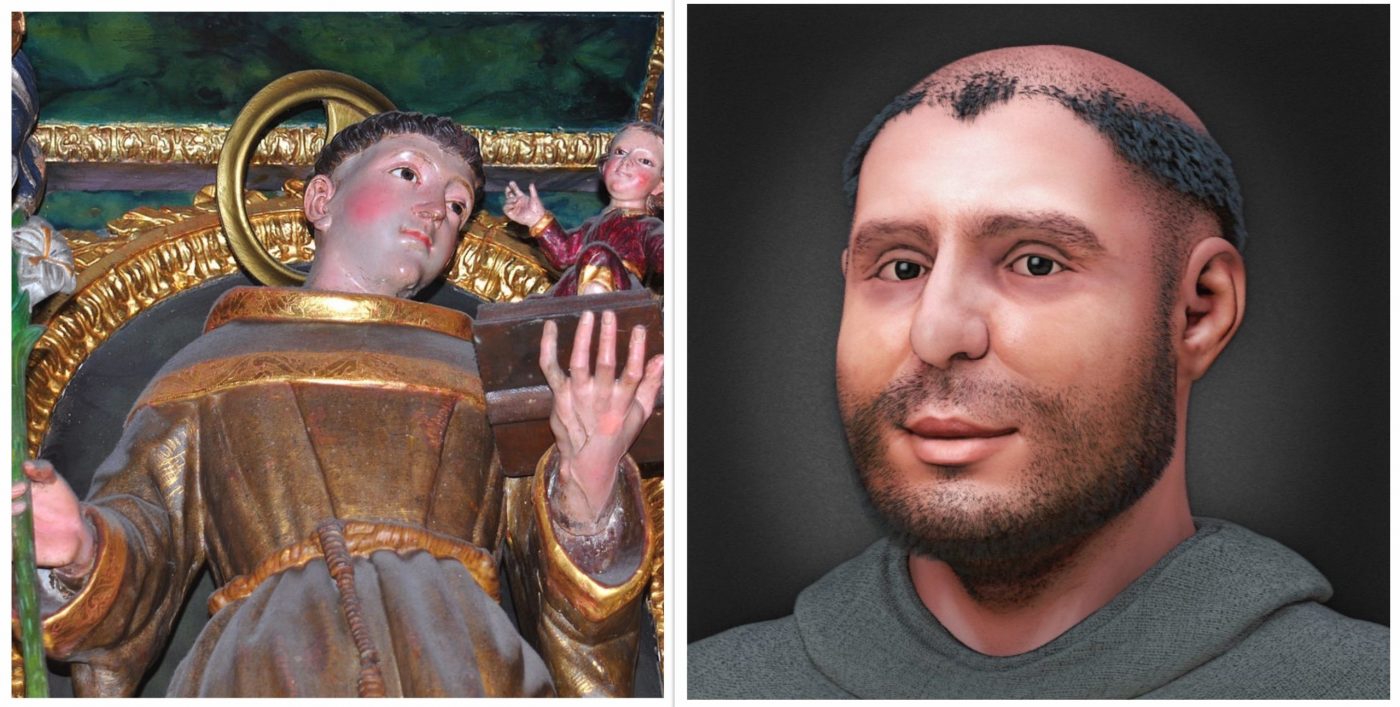
Saint Anthony was born in Portugal in 1195. He passed away quite young at the age of 36, but he made a huge impact during his day with his great ability to heal. The Catholic Church adores Saint Anthony since he was canonized as a saint within two years of his death. It has been said that when Anthony died, children cried in the street and bells rang by themselves. His body was exhumed three decades after his death, but the researchers only had his tongue and jawbone to guide them with this facial recreation.
King Henry IV
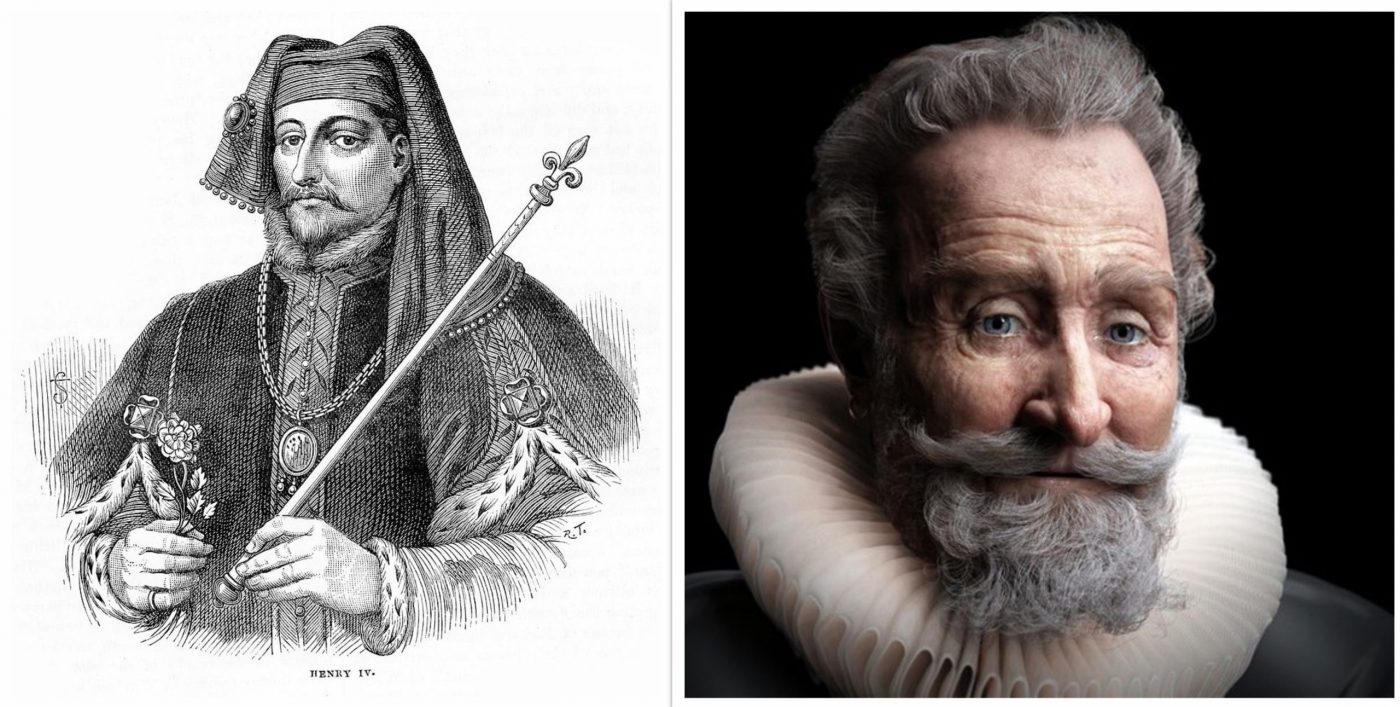
King Henry IV is popularly known as “Good King Henry.” He became the King of Navarre at 19, was married two months later, and Protestants flooded the city to celebrate his accession. But Protestants were quickly greeted with the St. Bartholomew’s Day Massacre as Catholics killed them in large numbers. King Henry IV is said to have survived a total of 12 assassination attempts while he was alive. The team behind this facial recreation is the same team that worked on Robespierre: facial reconstruction specialist Philippe Froesch and forensic pathologist Philippe Charlier.
Johann Sebastian Bach
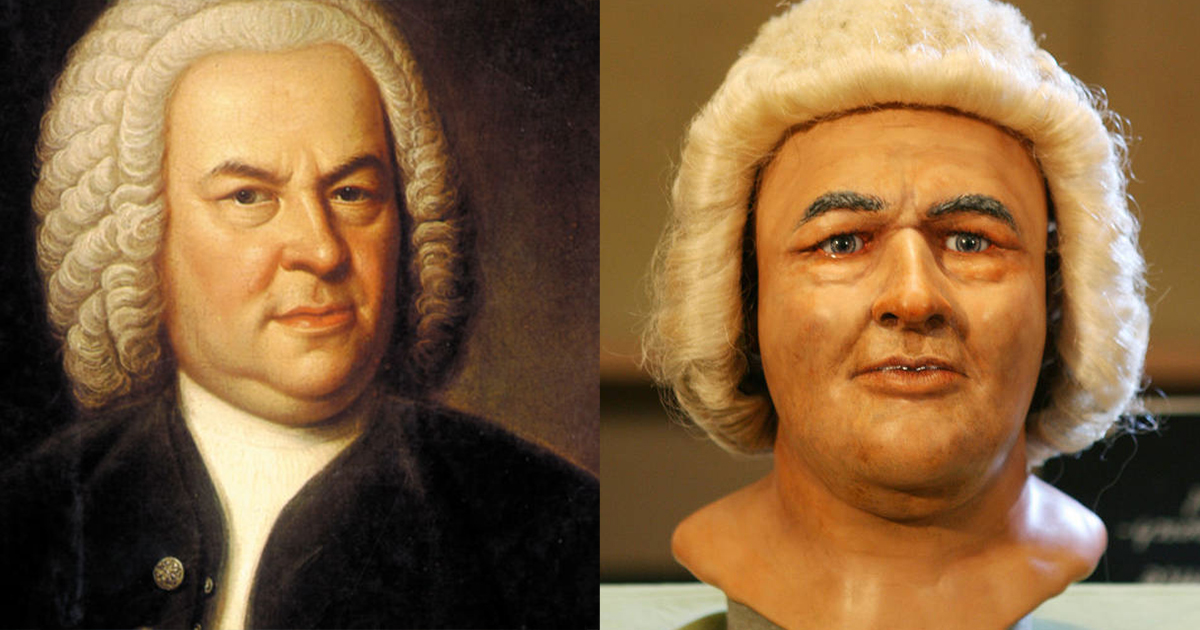
Johann Sebastian Bach, born in Germany in 1685, was a musical prodigy who grew up to be among the best composers of all time. His father taught him how to play the organ, despite his son’s young age. Bach wrote most of his music for church services during this time. Many people consider Bach to be one of the greatest composers ever. Dr. Caroline Wilkinson of Dundee University used a cast of the skull she believed to be Bach’s in order to recreate his face.
Simón Bolívar

Venezuelan military leader Simón Bolívar played an integral part in his country’s revolution against the Spanish Empire. Born into considerable wealth, he traveled to Spain to study, where he joined the resistance movement. After the invasion of Spain by France, many called him “El Libertador,” which means The Liberator in English. After a year of poring through historical documents, a forensic imagery team was able to create this legendary representation of Simón Bolívar.
Nicolaus Copernicus

In a time when people believed that Earth was the centre of the universe, Nicolaus Copernicus put forth a theory that explained how a sun-centred solar system worked. Born in 1473 and raised in Poland, Copernicus traveled all over Europe during his lifetime. While the likenesses of Nicolaus Copernicus in old portraits are not very flattering, it is only right that with advancements in technology, someone would make a better rendering of the man responsible for opening our eyes to the truth about the universe.
The Lady of Cao

In 2005, the Lady of Cao was discovered in Peru’s El Brujo region. She was buried in a simple cloth and experts estimated that she died around 400 A.D., thousands of years before the Incas. She was mummified and various artefacts were buried with her, so it is assumed that she came from aristocracy. Though she was brought back to life forensically, the role of this woman in society remains a mystery. It is believed that she died in her late twenties and was buried with different objects which might indicate a human sacrifice.
St. Nicholas
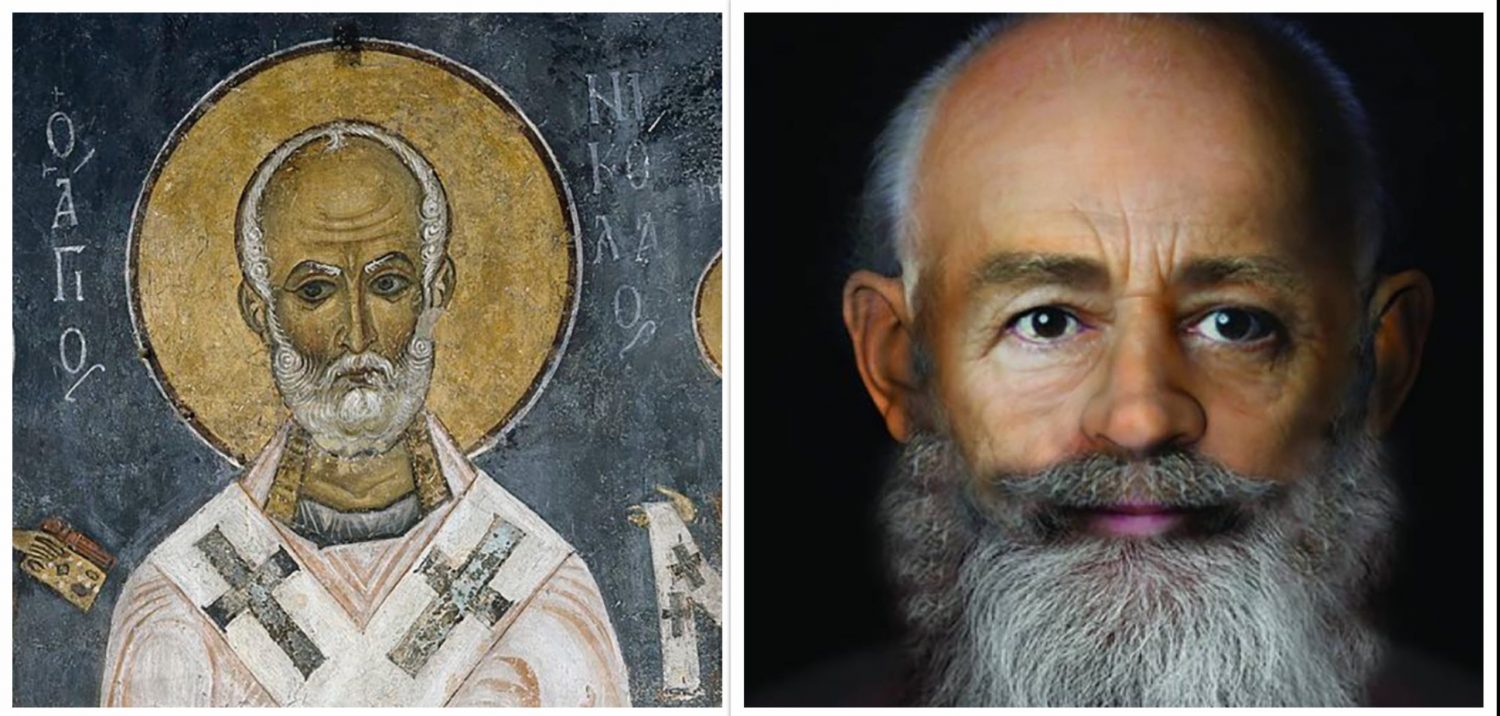
St. Nicholas, a 4th century Christian saint from Turkey, was reputed to be extraordinarily generous and caring toward others. Supposedly, he would leave presents in the shoes of children who left their footwear outside on his feast day, spawning the Christmas holiday tradition we know today. Westerners tend to assume that all popular historical figures were white, but St. Nicholas was from Turkey, so it’s likely his skin was darker and his facial features more Middle Eastern.
Maximilien Robespierre
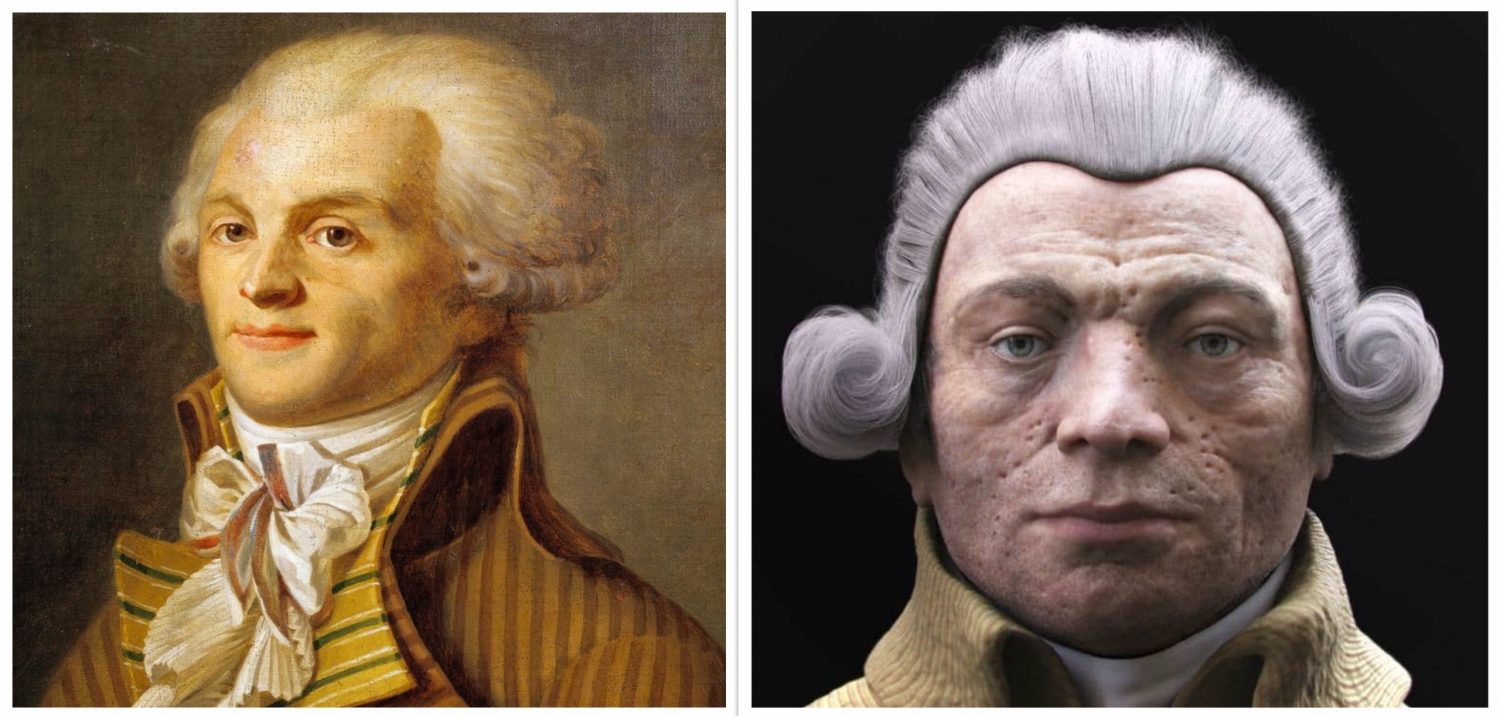
Maximilien Robespierre was a prominent politician associated with the French Revolution and a vocal advocate of universal manhood suffrage, religious tolerance, the abolition of celibacy, and abolishing slavery in the French colonies. He played an integral part in establishing the First French Republic but is best known for being a central figure during the “Reign of Terror” in France. In 2013, Philippe Charlier, a forensic pathologist, and Philippe Froesch, a facial reconstruction specialist, teamed up to create a digital rendering of the man whose face graced the French Revolution’s posters.
Mozart
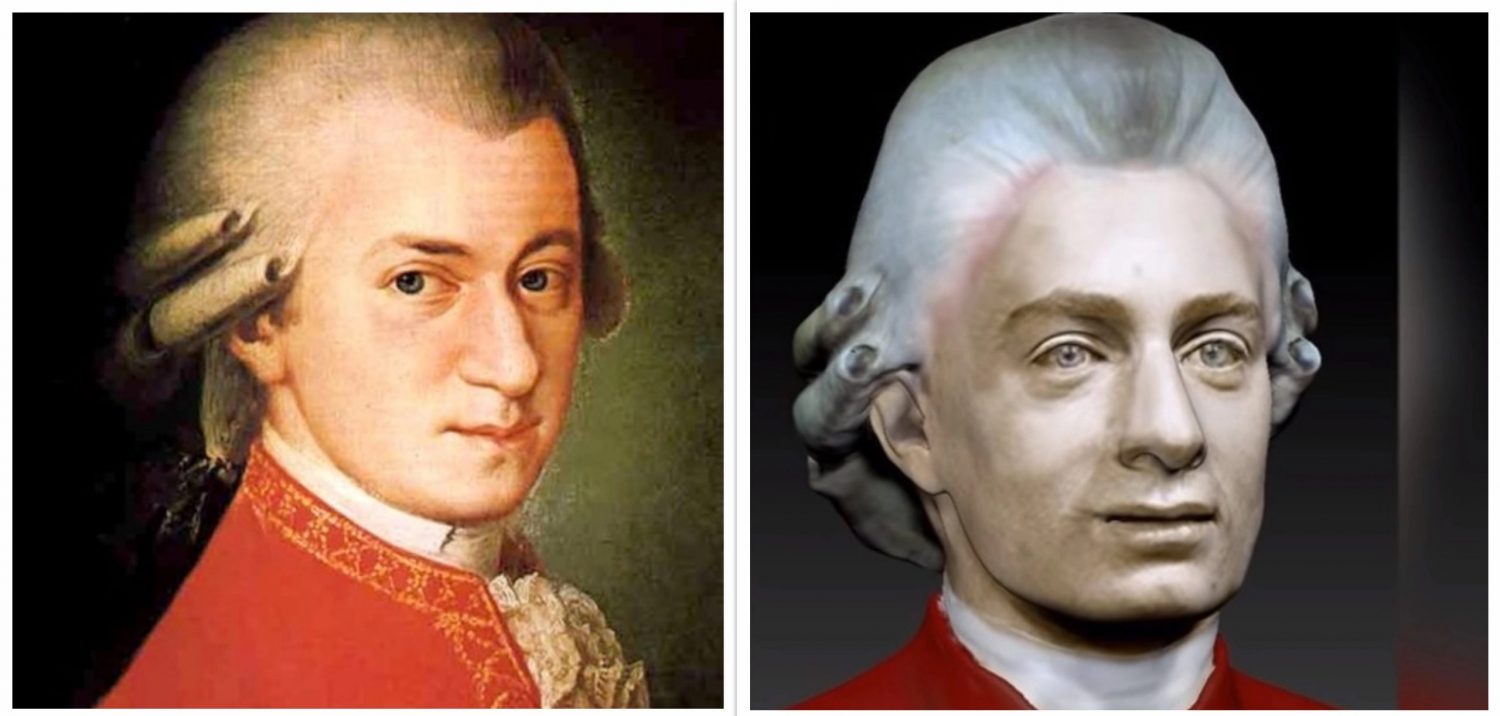
Wolfgang Amadeus Mozart was born on January 27th, 1756, in Salzburg, Austria. His musical talent was evident from a young age, and he composed his first piece of music at five years old. He went on to write more than 600 works over the course of his lifetime, including symphonic and operatic pieces as well as solo piano works. Mozart’s impact on Western music is profound even today; many musicians continue to be influenced by his work. After Mozart’s death, his skull was exhumed, and this was the basis for Pierre-François Peuch’s facial reconstruction of the composer.
Ramses II
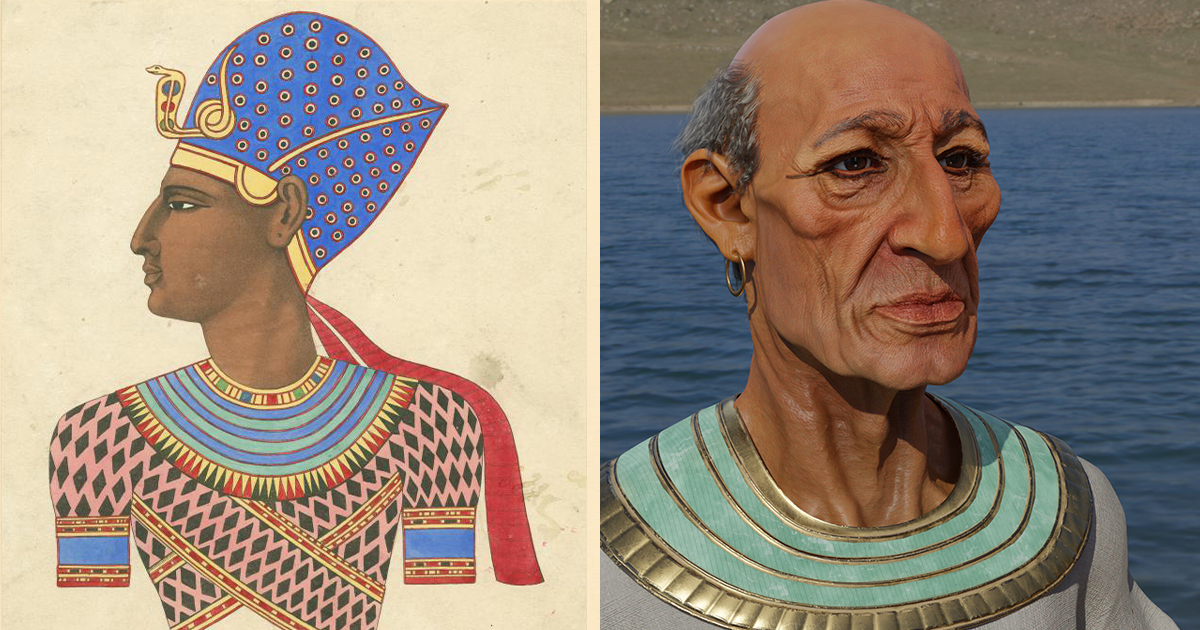
Ramses II, a legendary pharaoh who reigned in the 19th Dynasty, was born in 1303 BC and died in 1213 BC. He is known for having fathered between 48 and 50 sons and between 40 and 53 daughters. At 90 years old, he passed away after ruling Egypt for more than 66 years. Today, five monuments across Egypt honour his life. When Ramses II died, his body was buried in the tomb KV7 in the Valley of the Kings. After his burial, his remains were discovered in 1881 and are now on display at the Egyptian Museum in Cairo.
Huarmey Queen
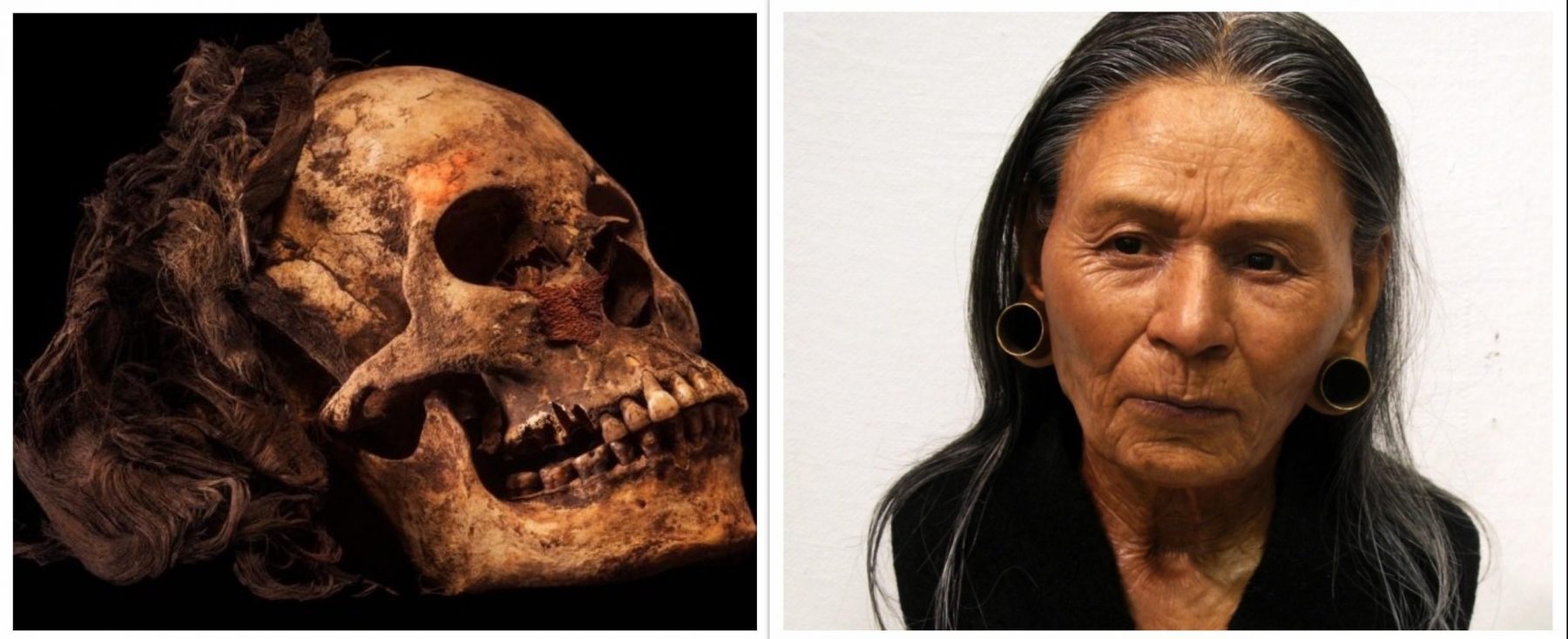
The Huarmey Queen was a key figure in Peru’s Wari (Huari) culture. She and her people lived in coastal areas of the Andes Mountains, as well as south-central Andes, from 700 – 1000 AD. The remains of the queen were discovered north of Lima in El Castillo de Huarmey (Huarmey’s Castle), a well-preserved pyramid mausoleum along with 57 other noblewomen. While most virtual reconstructions are rendered as computer-generated images, scientists gave the 1200-year-old a physical form that makes her look quite realistic.
Otzi The Iceman
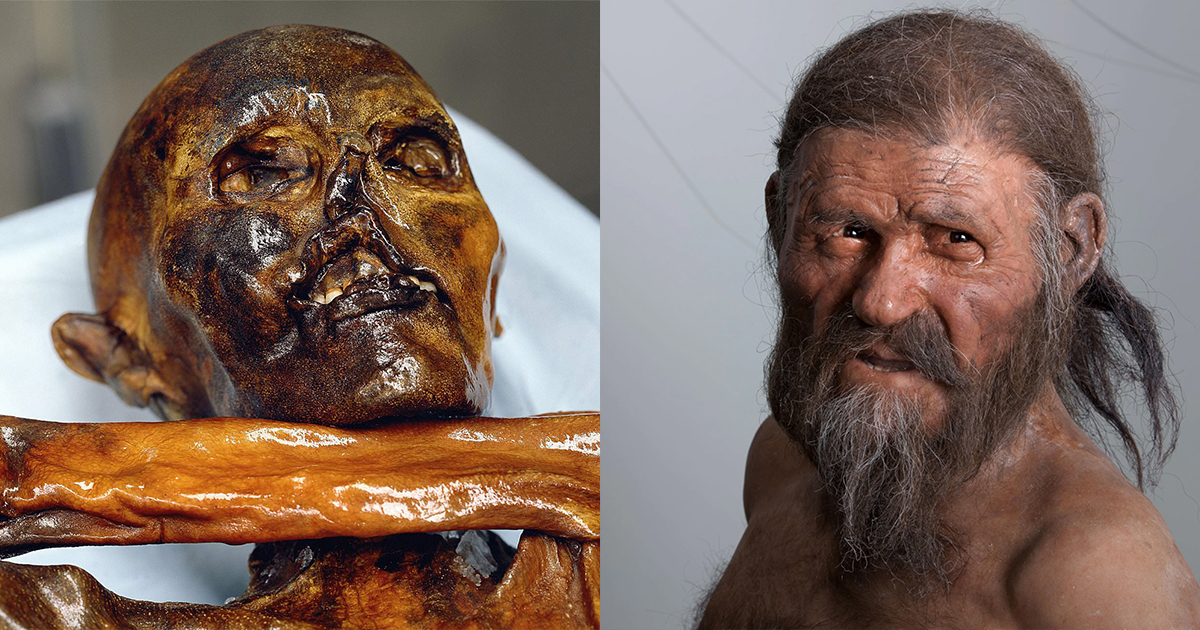
Otzi the Iceman lived between 3400 and 3100 BCE. A well-preserved natural mummy, he was also called the Similaun Man, the Man from Hauslabjoch, the Tyrolean Iceman, and the Hauslabjoch mummy. He was discovered in September of 1991 in the Ötztal Alps between Austria and Italy. His body is on display at the South Tyrol Museum of Archaeology in Bolzano, Italy. The naturalistic reconstruction of Otzi was made possible by the fact that his body was frozen in ice for over 5000 years and is still in very good condition.
Owain Glyndwr
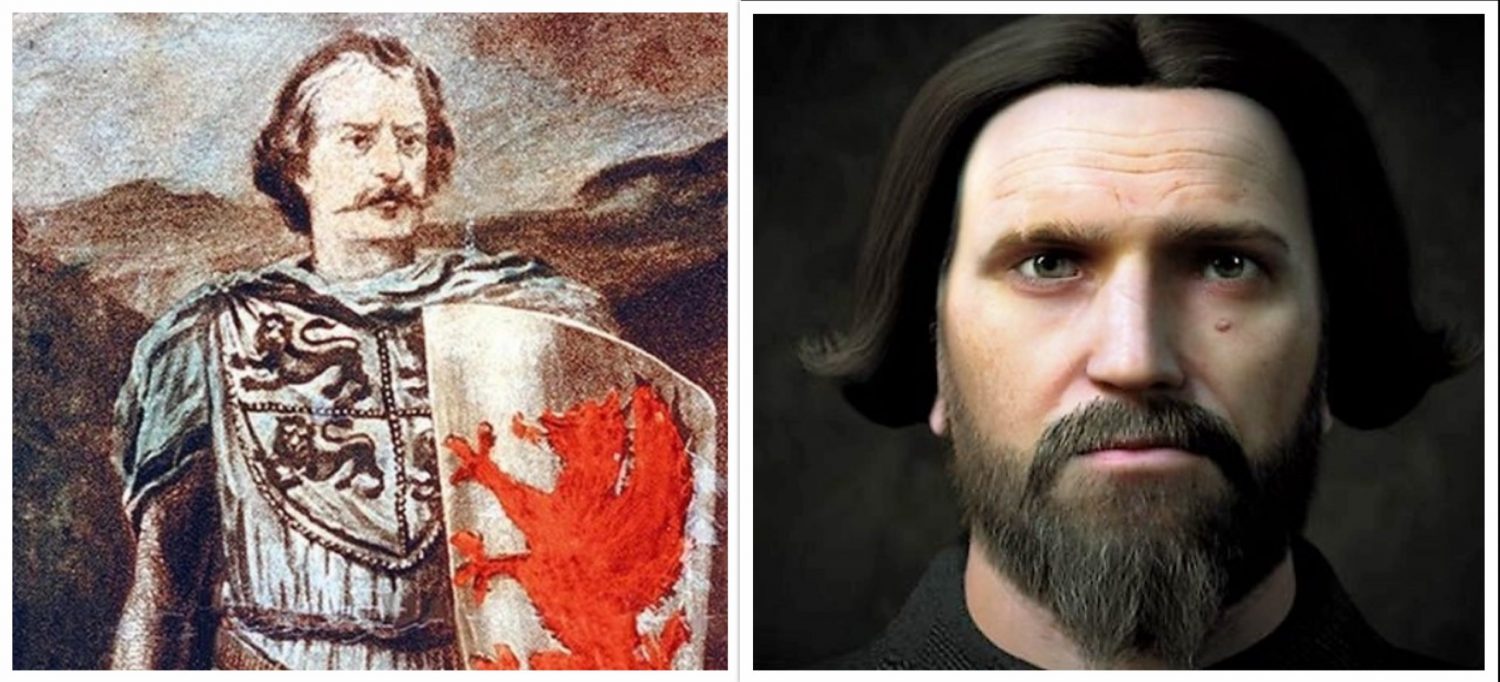
Owain Glyndŵr was a Welsh rebel who led an uprising against England in the late Middle Ages. He was born in 1359, and his rebellion lasted from 1404 until his death in 1415. He was portrayed as an exotic and wild king ruled by emotion and magic in William Shakespeare’s play Henry IV, Part 1. The film The Face of Glyndwr takes viewers on a journey into the face reconstruction of the fifteenth-century Welsh prince. Using latest 3D and CGI computer-generated technology, Owain Glyndwr comes to life.
Jane Of Jamestown
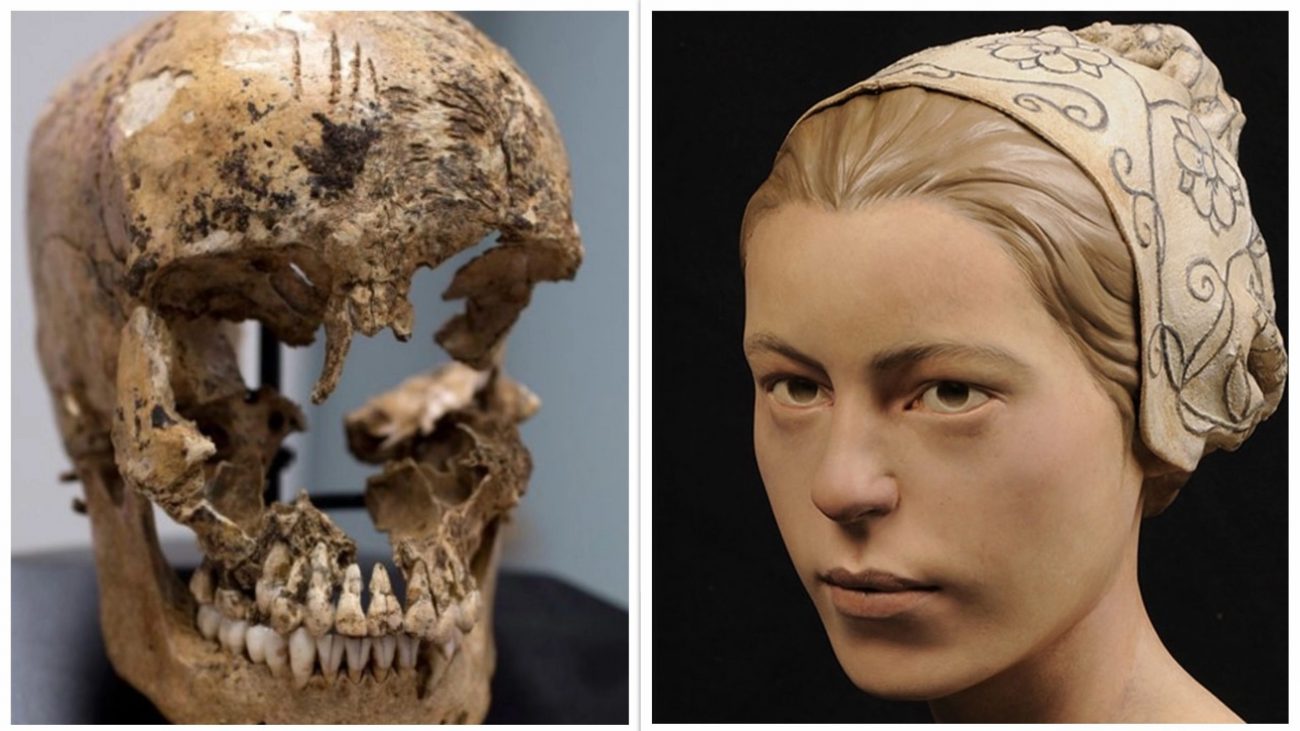
Jamestown resident Jane is well-known as the first known English person to be cannibalized in America. Her mutilated body was found in the cellar of the governor’s mansion during the Starving Time of 1609-1610, when many Jamestown colonists were driven to desperation by hunger. Jane was just a young girl when she passed away, only 14 years old. In 1609, a doctor named Dr. Douglas Owsley at the Smithsonian Institution examined Jane. He concluded that the marks and cuts on her were from attempts to separate tissue and brain from bone, which made sense since people in Jamestown had starved during that winter.
Robert Burns
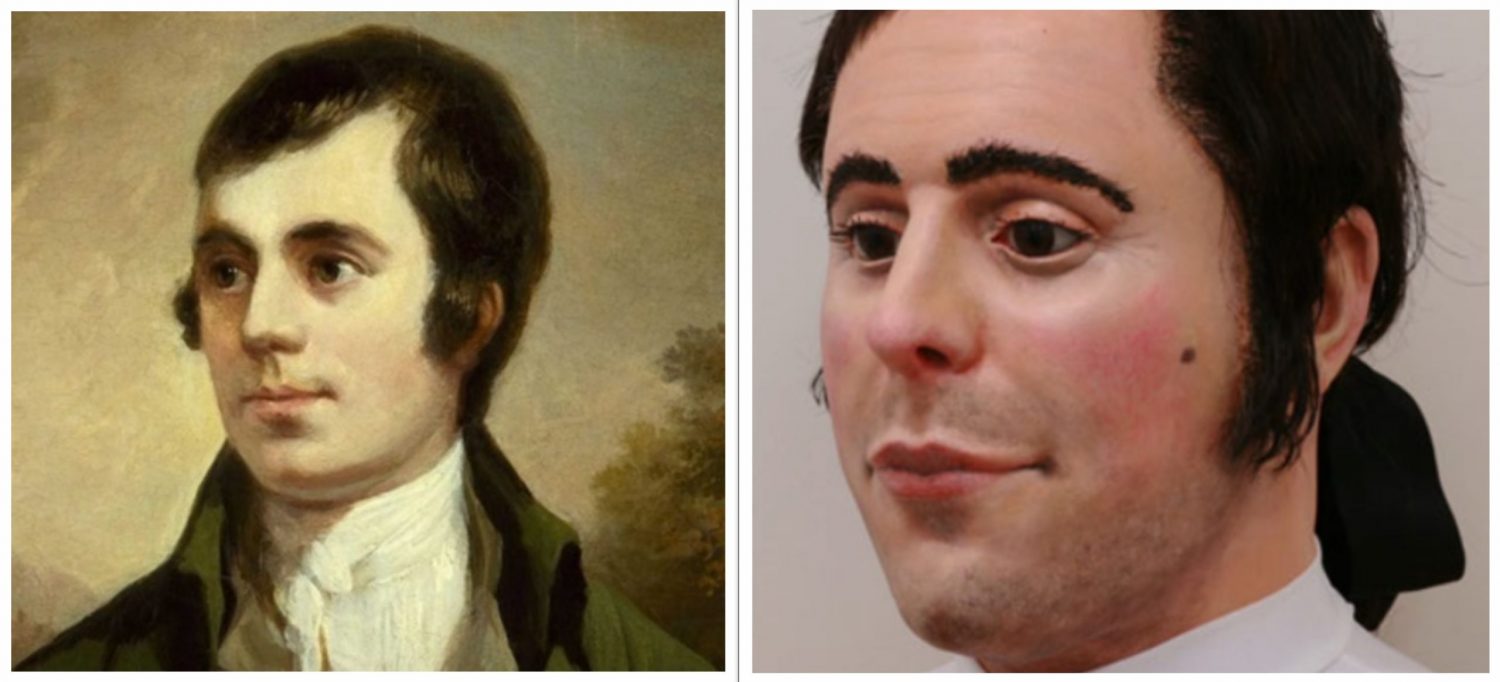
Robert Burns was born on January 25, 1759, in Alloway, Scotland. His father died when Burns was a young boy, and his family struggled to make ends meet after that. The experience seemed to free Burns up emotionally, and the next few years saw him produce many poems. His most famous works are “Auld Lang Syne” and “The Battle of Sherramuir”. Researchers used his skull in 2009 to produce a reconstruction of what the poet would look like today.
Lady Dai
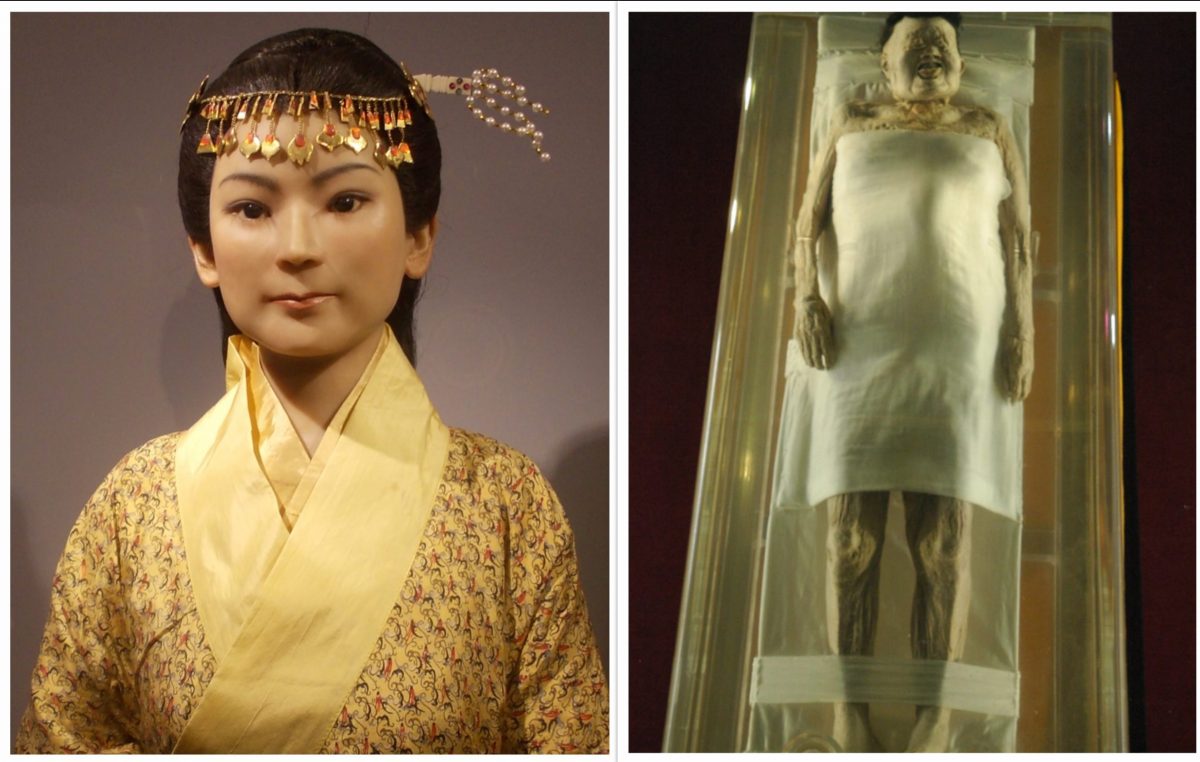

Lady Dai, or Xin Zhui, was the aristocratic wife of Han Dynasty nobleman Li Cang. Her burial site contained many luxuries that were commonly found in tombs of high-ranking officials. A beauty in her younger days, Lady Dai’s craving for luxury eventually led to her death from a heart attack and obesity. The excavation of the tomb in 1973 is considered one of the major archaeological discoveries of the 20th century. Lady Dai, who lived in China about 2,000 years ago, is one of the best-preserved mummies ever found. The preservation is thanks to the fact that she had been swaddled in 20 layers of silk.
Caligula
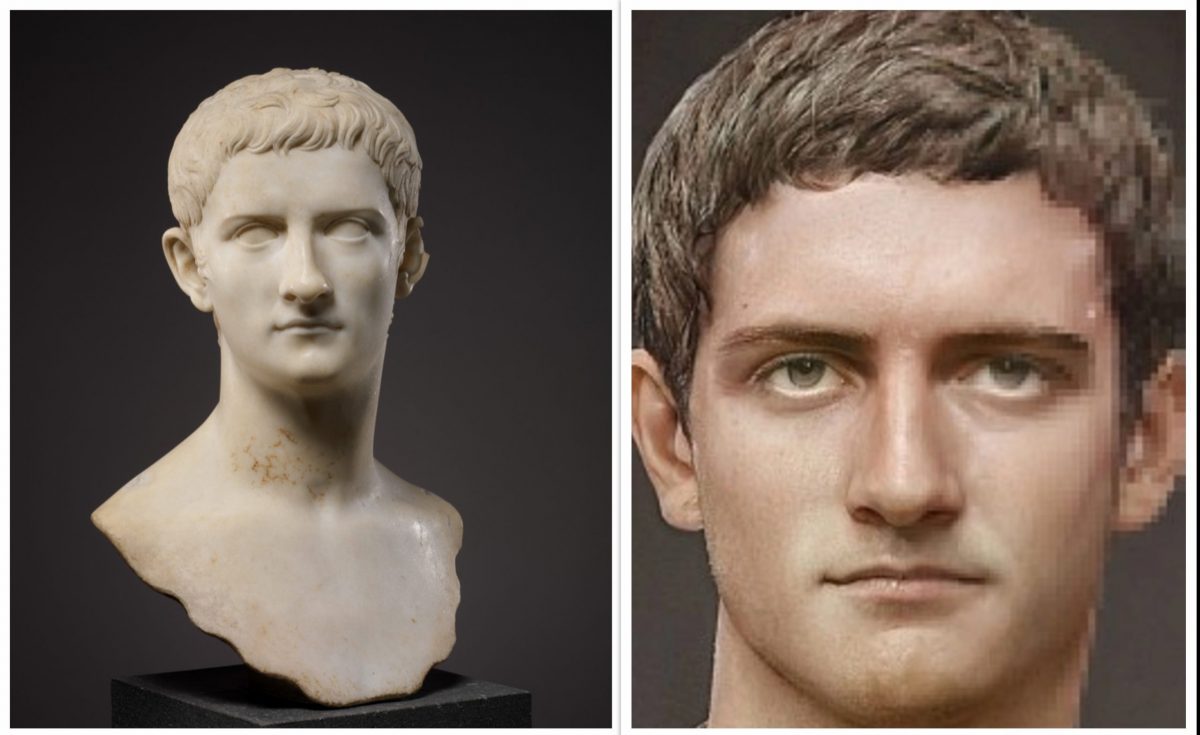
When Roman soldiers gave Gaius Caesar Augustus Germanicus the nickname Caligula, meaning ‘little boot’, they were referring to his short stature and his temper. Caligula was only 20 years old when he became the third emperor of Rome following the death of his father. Caligula was remembered as a tyrannical, sadistic, and selfish ruler who reigned for only four years before he was assassinated by his own men. Artist Dan Voshart used a bust to show what the emperor would have looked like in real life.
Macrinus
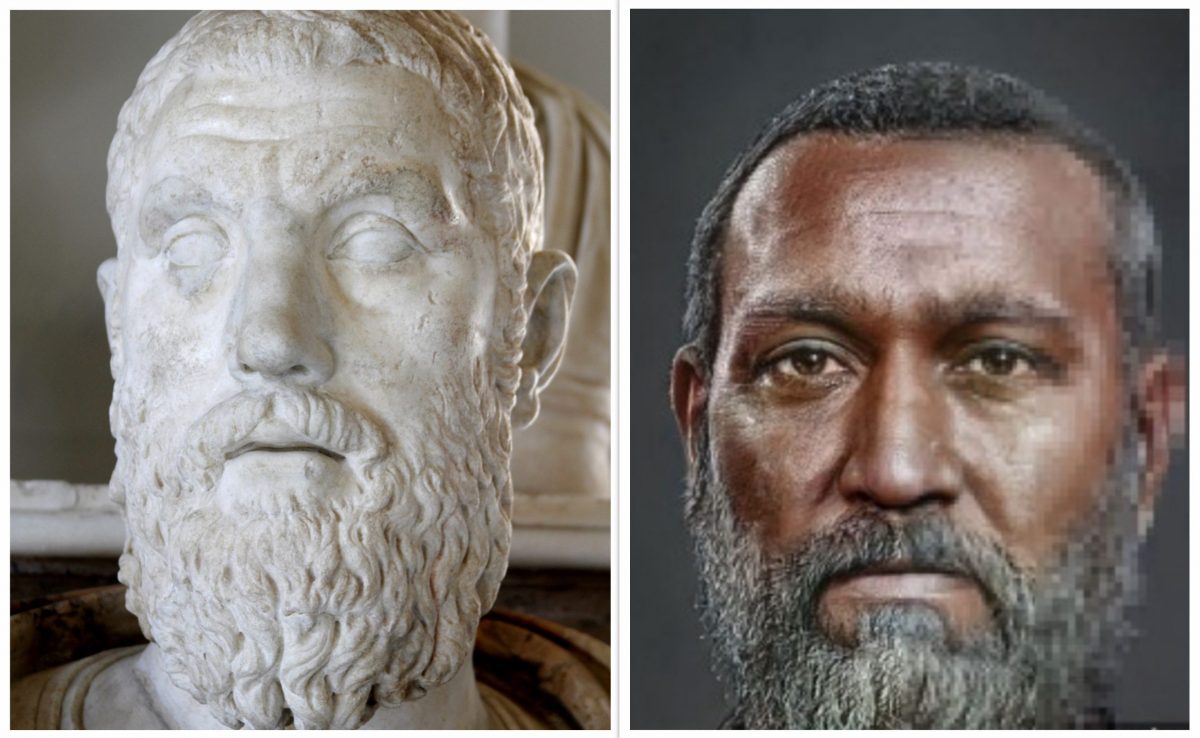
Macrinus, who was Emperor of Rome from 217 to 218 CE, is often pictured as white in modern depictions. However, historical records show that he was from North Africa, and was described as ‘moorish by race’ – a term often used to describe Europeans of African descent. Artist Dan Voshart used a statue to create a realistic depiction of the former emperor. In his interpretation of Macrinus, he made him black even though no one has ever depicted him as such before. Voshart admits that this is his artistic interpretation, but also notes that his images on coins and busts shows him having African characteristics such as a wide nose and thick hair.
Arsinoe IV
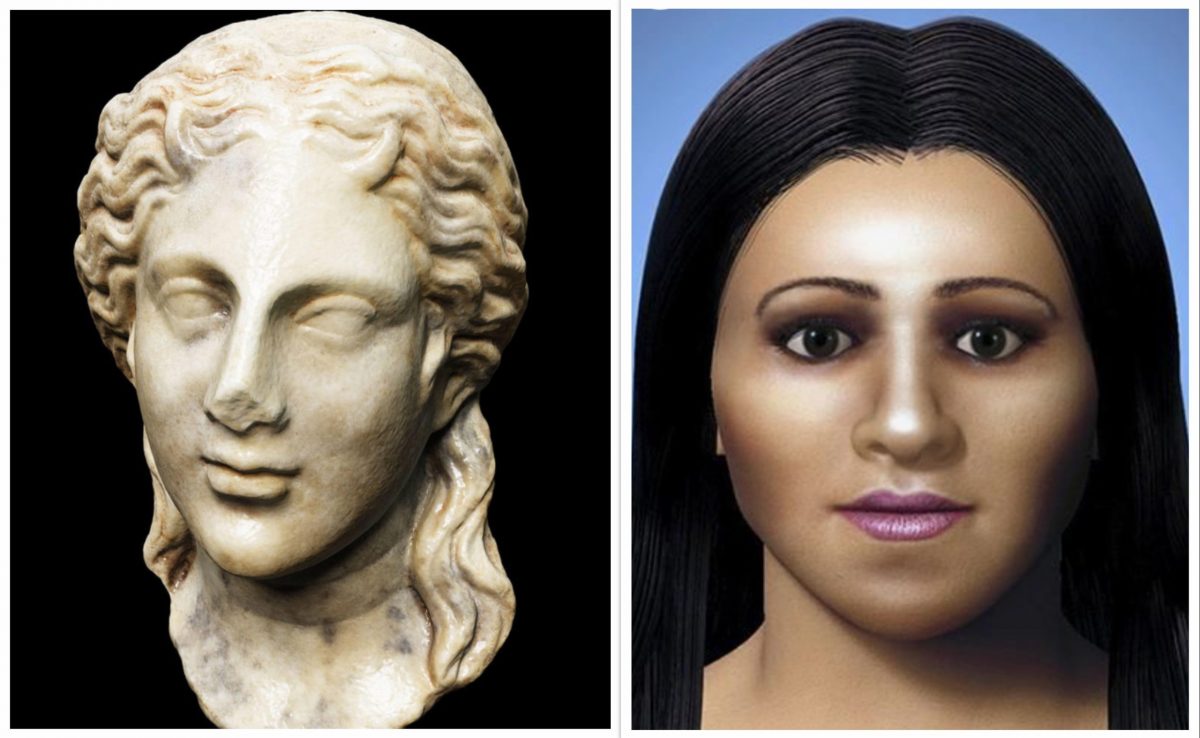
Arsinoe IV was Cleopatra’s younger sister, with whom she shared the same father and probably the same mother. During the Alexandrian war, Arsinoe led the native forces against Cleopatra and Julius Caesar. Researchers at Dundee University created this 3D computer model of Arsinoe. Cleopatra and Mark Anthony ordered Arsinoe’s execution in 41 BC outside the Temple of Artemis in Ephesus, and researchers think they have discovered her body buried in what was once a high-status tomb in Ephesus.
Emperor Otho
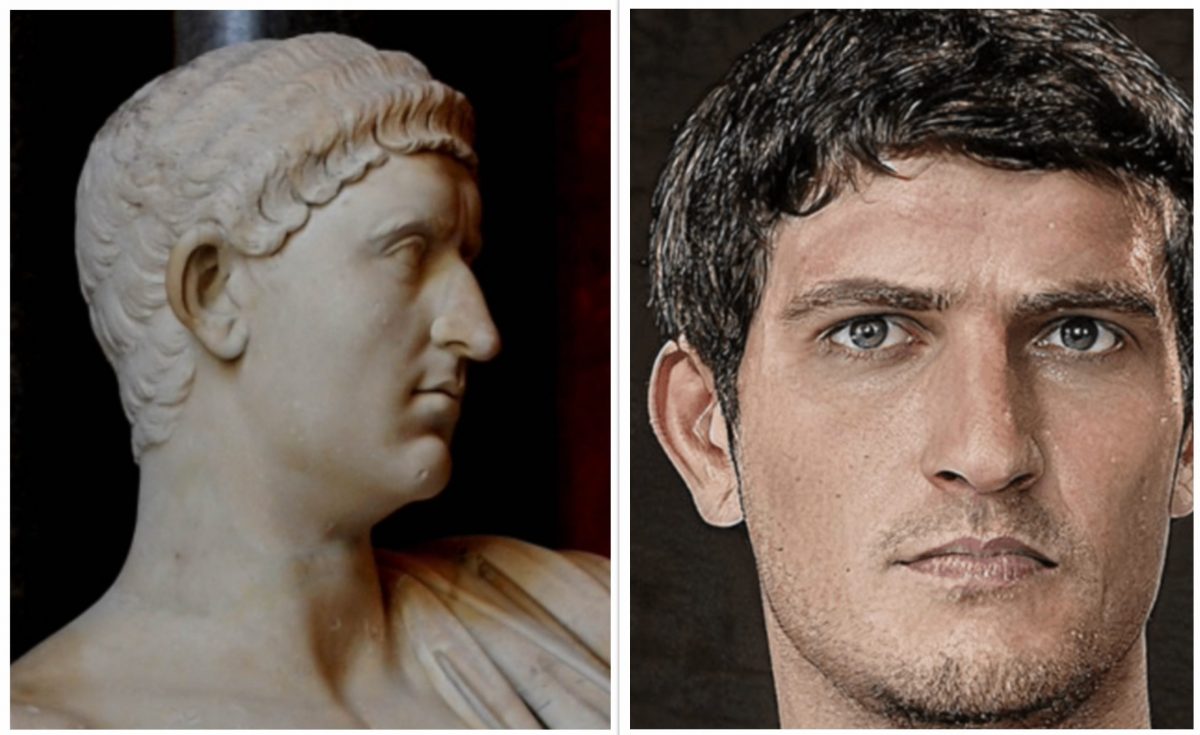
Marcus Otho Caesar Augustus ruled Rome for just 3 months. He was the second ruler in the famous Year of the Four Emperors, when four emperors rose and fell in quick succession. Otho was born into a noble Etruscan family, and he was good friends with Nero, who became emperor before him. Despite only ruling for three months before committing suicide in battle, there are still many sculptures that show Otho’s likeness. Artist Haroun Binous created a face based on one of these busts and the result is striking.
Octavian Augustus
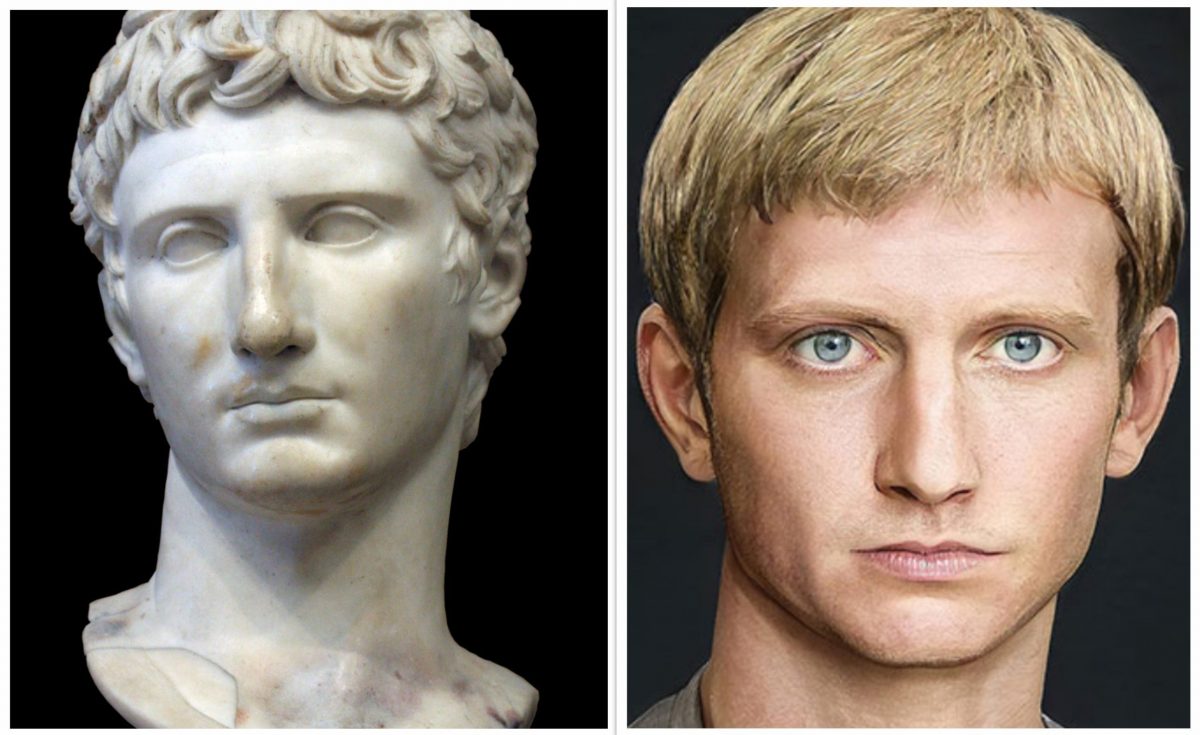
Octavian became emperor of Rome in 27 BC when his great-uncle Julius Caesar was assassinated. He inherited a lot of power, but the Roman people truly loved him. He continued to rule until he died in AD 14. This period of time has been called Pax Romana, which means “Roman peace.” It was the most peaceful period of the empire’s history. Several busts and statues have been made of Octavian Augustus for his role in helping the Roman Republic flourish. Artist Salva Ruano created a series of sculptures titled Cesares de Roma, one of which shows what he may have looked like as a young man.
Anne Boleyn
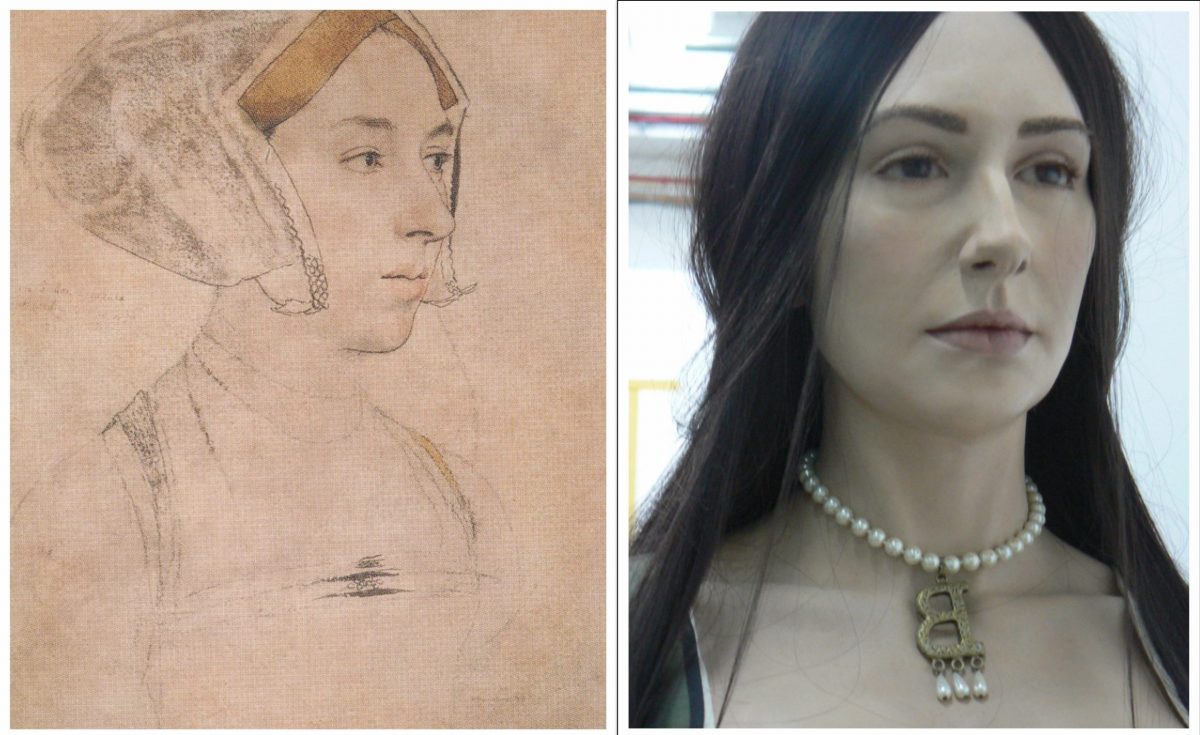
The second wife of Henry VIII, Anne Boleyn was a controversial figure who has been the subject of debate over the years because of the various artistic interpretations of her face. Hever Castle houses a waxwork that has been created by artist Emily Pooley and displays her research on Anne’s appearance. Pooley wrote her dissertation on historical written records describing Anne as having black hair, olive skin, and an oval face. After reviewing the records, Pooley decided that the sketch by Holbein looked most like the records. She also found a model who resembled the sketch as much as possible, and they used 360-degree photography to get a base structure. Then, she made adjustments based on the Holbein sketch.
Napoleon Bonaparte

Napoleon Bonaparte ruled France as emperor from 1804 to 1814, and then briefly again in 1815. A face mask was taken of him upon his death, so we know exactly what he looked like. Artists have created portraits with this likeness, which look very similar to some of his earlier paintings. This isn’t quite as accurate as some of the recreations made from actual skulls, but it’s a good way to see what someone looked like when they were alive. Similar 3D models could be made for nearly any death mask on Photoshop. However, there is a lot of controversy around this particular death mask, and some people believe copies are fake.
Paul the Apostle
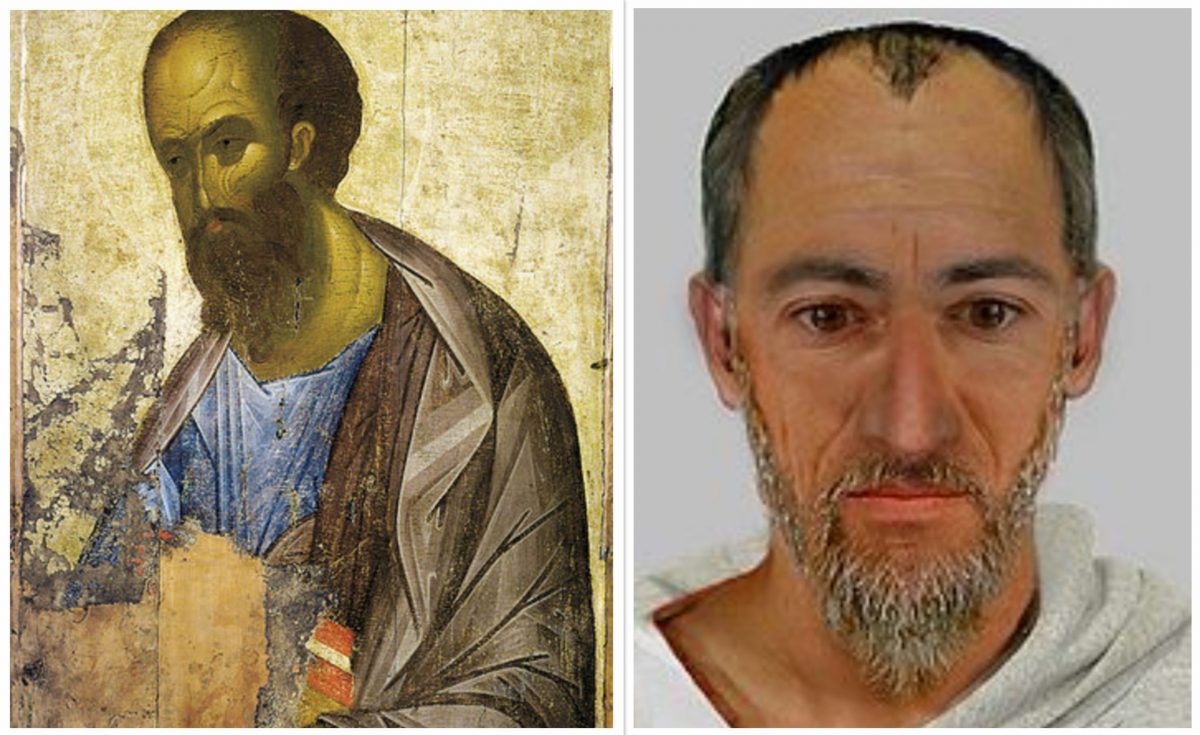
Paul, also known as Paul the Apostle and Saint Paul, was a man who spread the teachings of Jesus in the first century. The Apostle Paul appeared in 15 of the 28 chapters of The Acts of the Apostles and he authored 13 of the 21 epistles in the New Testament. Paul’s stone coffin was found under an ancient Roman church, and this facial recreation was created by experts of the LKA NRW in Germany.
Frédéric Chopin
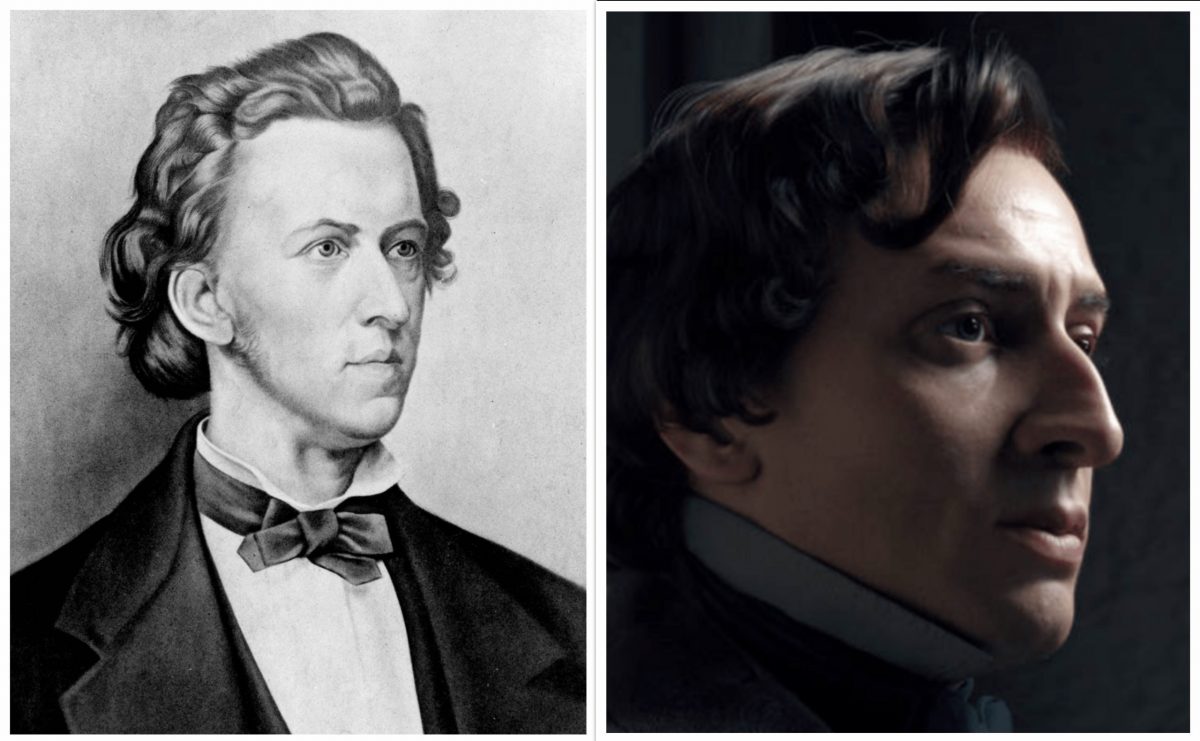
Frédéric Chopin was a composer and virtuoso pianist who wrote some of the world’s most popular piano music. Even today, listeners can appreciate his genius. Although at least one photograph of Frédéric Chopin exists, it only depicts him as an older man. Due to his fame, his face and hands were cast in molds when he died. Iranian visual artist Hadi Karimi took the existing photograph and portraits of Chopin, then created an image of what the composer might have looked like. His eyes reflect Chopin’s spirit, conveying the composer’s expressive nature.
Philip the Arab
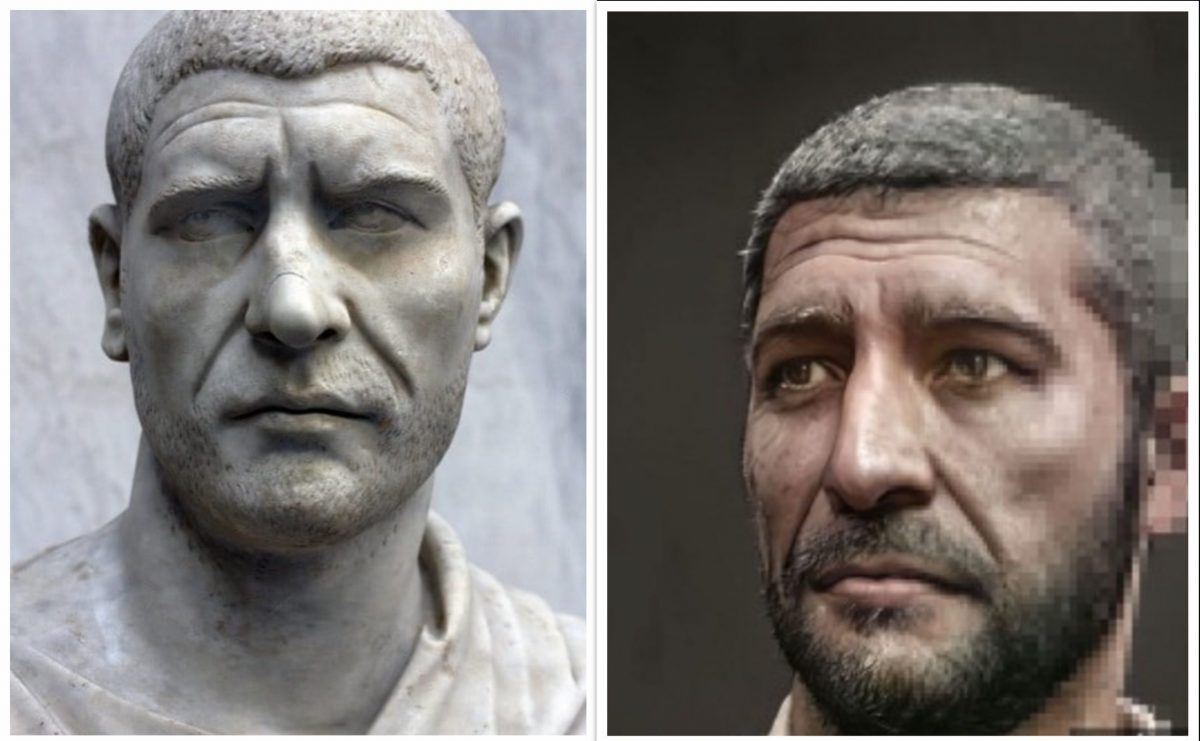
Philip the Arab, who reigned as Roman emperor from 244 to 249, is remembered for being a huge figure in Roman history. He negotiated peace with the Persian Sassanid Empire, which was no small feat. But he was betrayed during the Battle of Verona and killed in a rebellion. This ended his reign of five years, but he left behind a rich legacy despite his short time as emperor. This 3D-scanned sculpture is another artistic interpretation by artist Dan Voshart. It looks exactly like the bust, except that Philip’s expression reflects the sadness and betrayal he must have felt.
Dante Alighieri
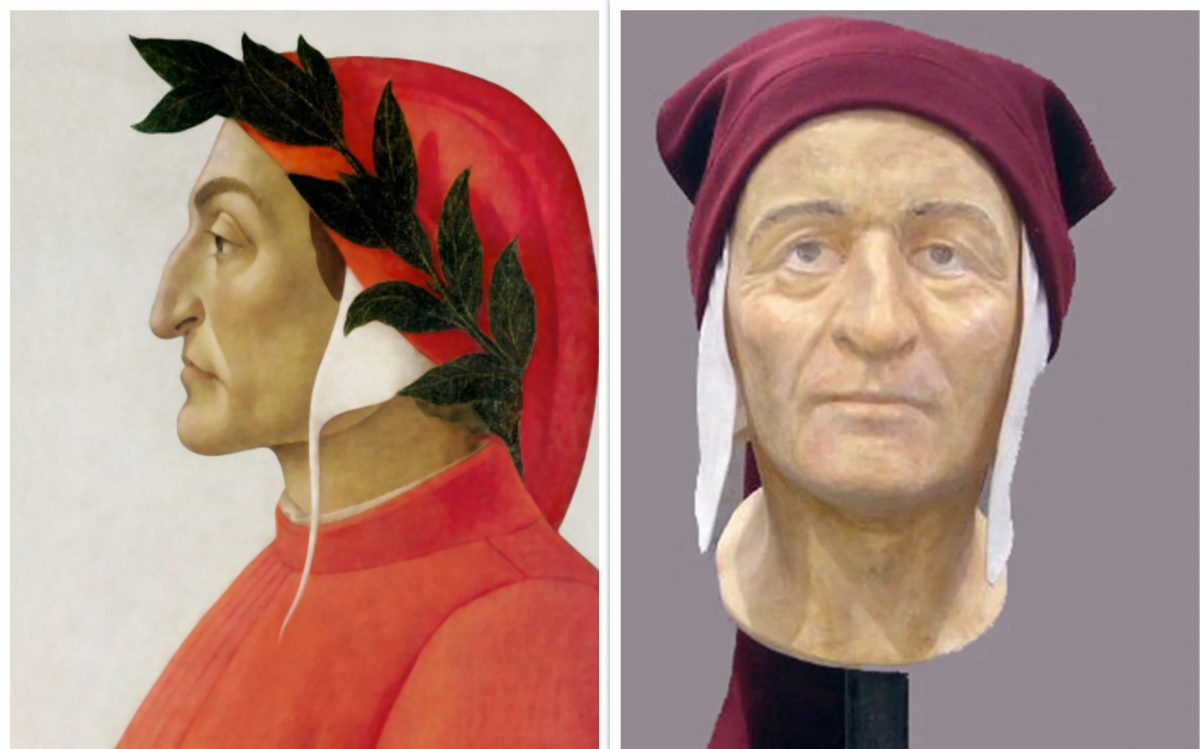
Dante Alighieri was the author of The Divine Comedy, a three-part series of poems about a journey through hell (Inferno), purgatory (Purgatorio) and heaven (Paradiso). Dante’s work is responsible for much of our modern notion of the afterlife. Alighieri is often depicted with a hook nose, but since we can’t prove this fact and since the nose is cartilage, the facial reconstruction also includes a similar nose. That being said, his features were not as sharp as paintings depict.
Thomas Jefferson
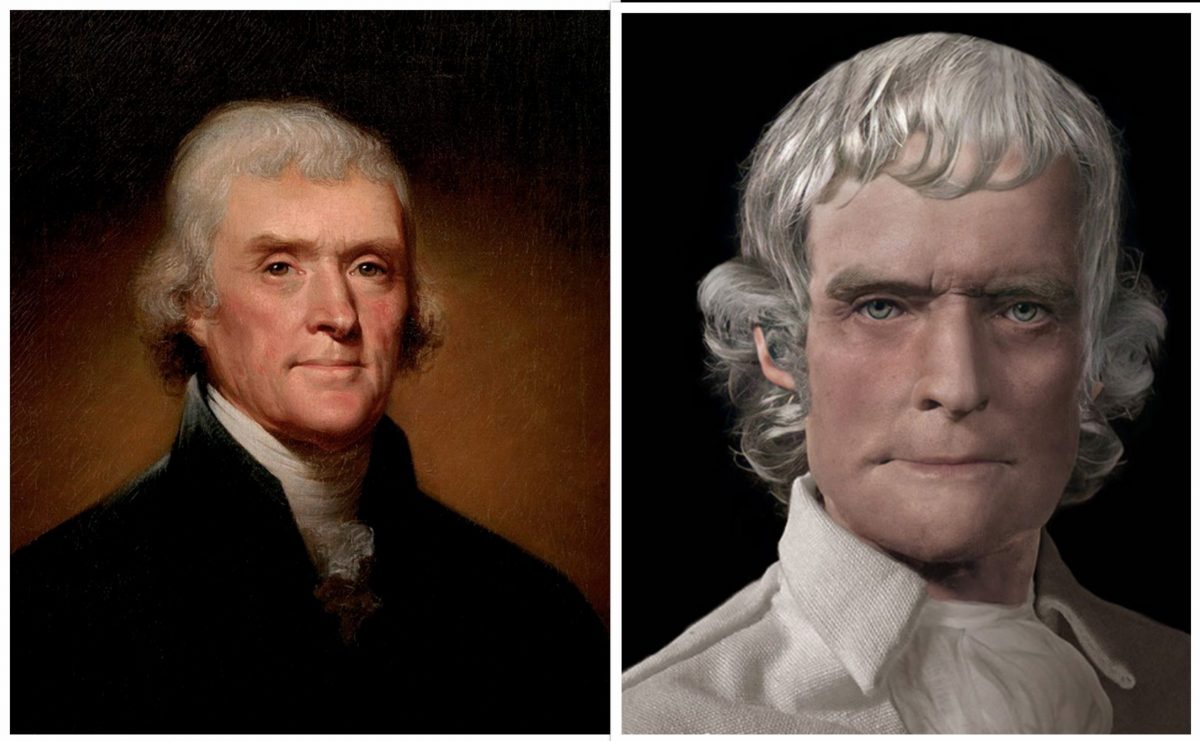
Thomas Jefferson is a very important figure in American history. He’s famous for being the author of the Declaration of Independence and for helping to draft the Virginia Statute for Religious Freedom. This document disestablished the Church of England in Virginia, which helped set up America as its own country following the Revolutionary War. This recreation was created by Digital Yarbs using Jefferson’s life mask – a plaster cast that was created whilst he was still alive.
Benjamin Franklin
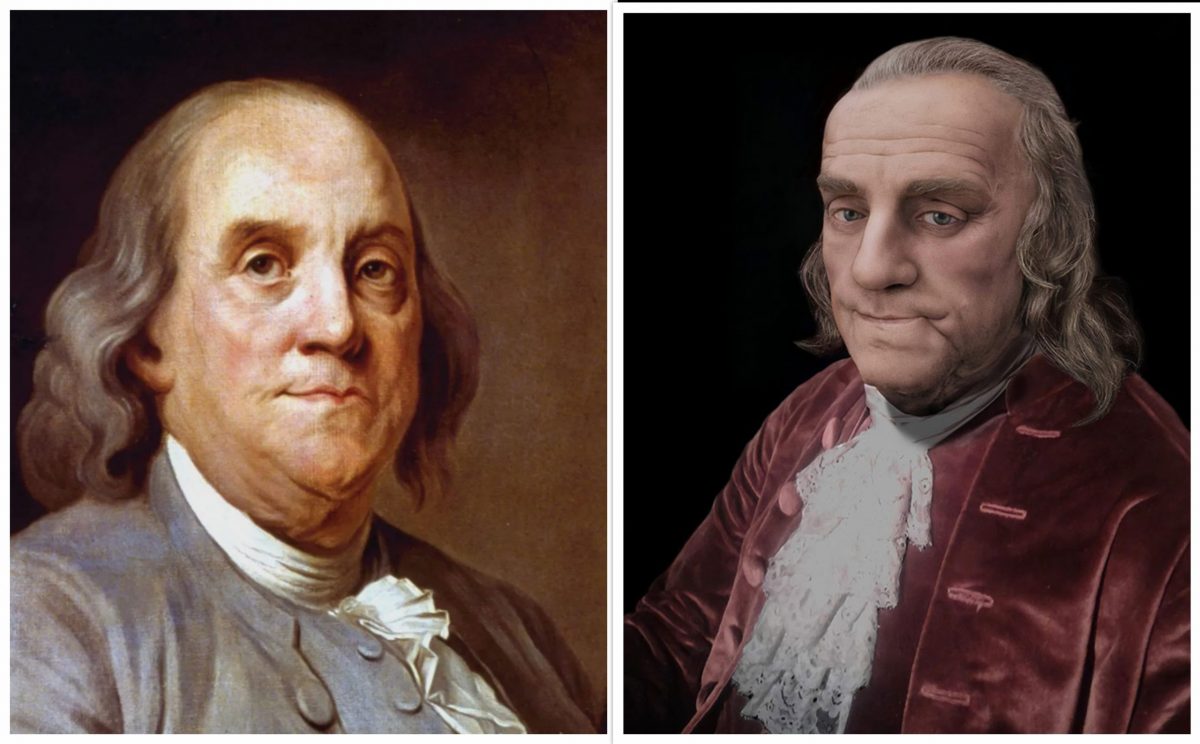
Benjamin Franklin’s accomplishments were many. He was a great politician, the Postmaster of Philadelphia, an Ambassador to France, and a founding father of the United States of America. He was also a prolific inventor with more than 10,000 inventions to his name. Although the original model of Benjamin Franklin’s life mask is in the British Museum, Digital Yarbs was able to take a replica to show us what everyone else saw while working on the Declaration of Independence.
Henry VII
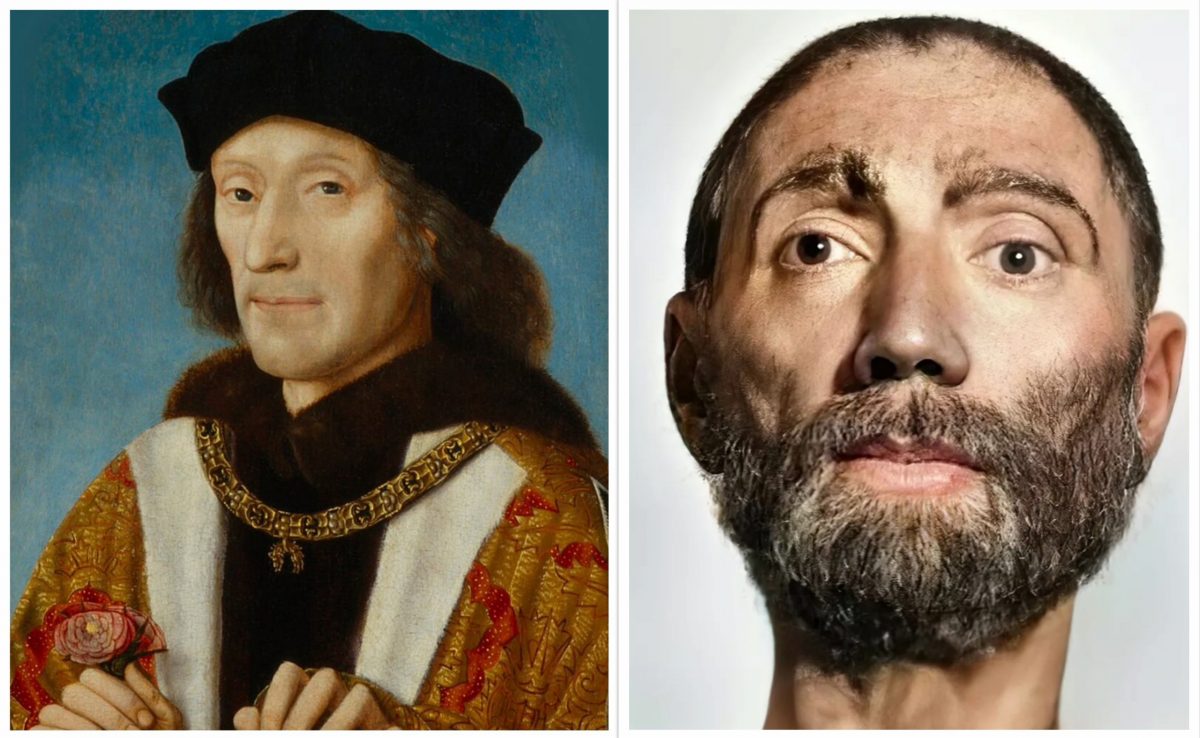
Henry VII may be less popular than his son, but he is just as famous. The Wars of the Roses, a struggle for the throne between factions of the Tudor family, raged for 30 years before Henry’s father even reached adulthood. A battle between two groups of Tudors ended these conflicts in 1485 when Henry VII won at Bosworth Field. Graphic artist Matt Loughrey took inspiration from Henry VII’s paintings and death mask to develop this recreation. He’s much thinner than you would imagine, but that could be because he died of tuberculosis at the age of 52.
Beethoven
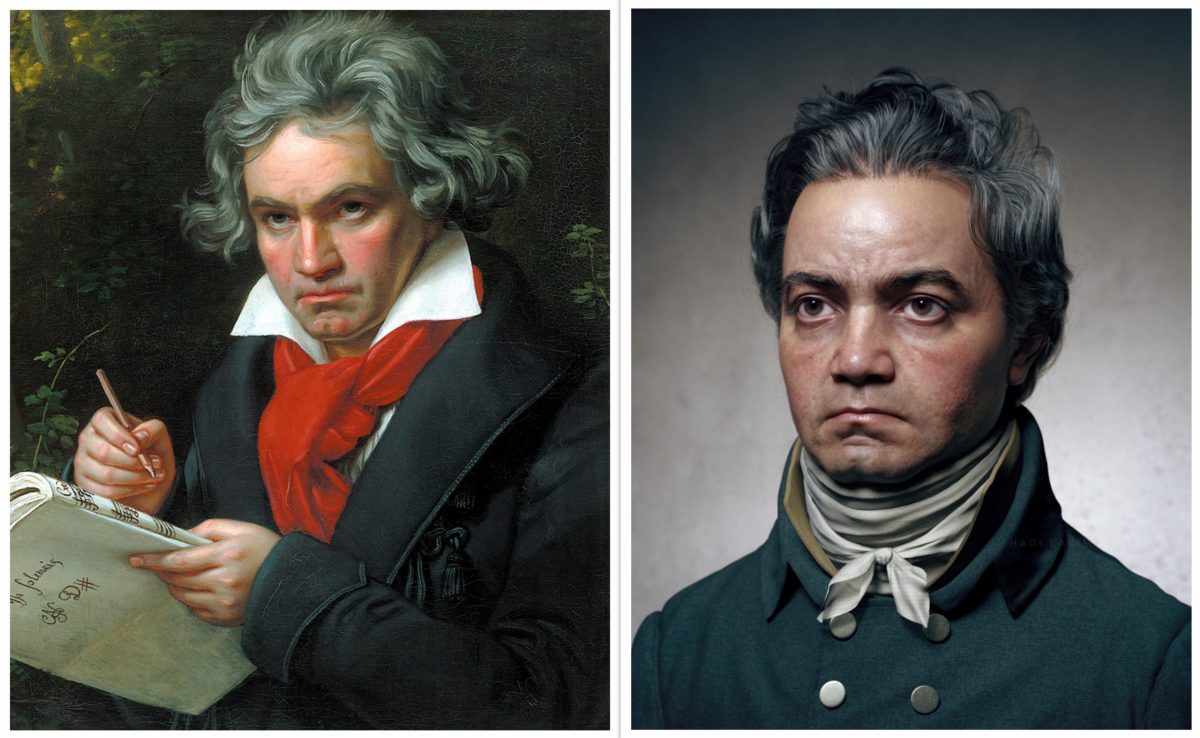
Ludwig van Beethoven was a German composer and pianist. He is regarded as one of the greatest composers of all time and is often called the Father of Modern Music. His compositions include symphonies, concertos, piano sonatas, chamber music and operas. Iranian visual artist Hadi Karimi has created 3-D renderings of composers including Chopin, Clara Schumann, and Brahms. His recreation of Beethoven’s face is based on the composer’s life mask and bust. In Beethoven’s self-portraits, we see a genius and a legend of music history. But these new renderings make him seem human.
Sir Isaac Newtown
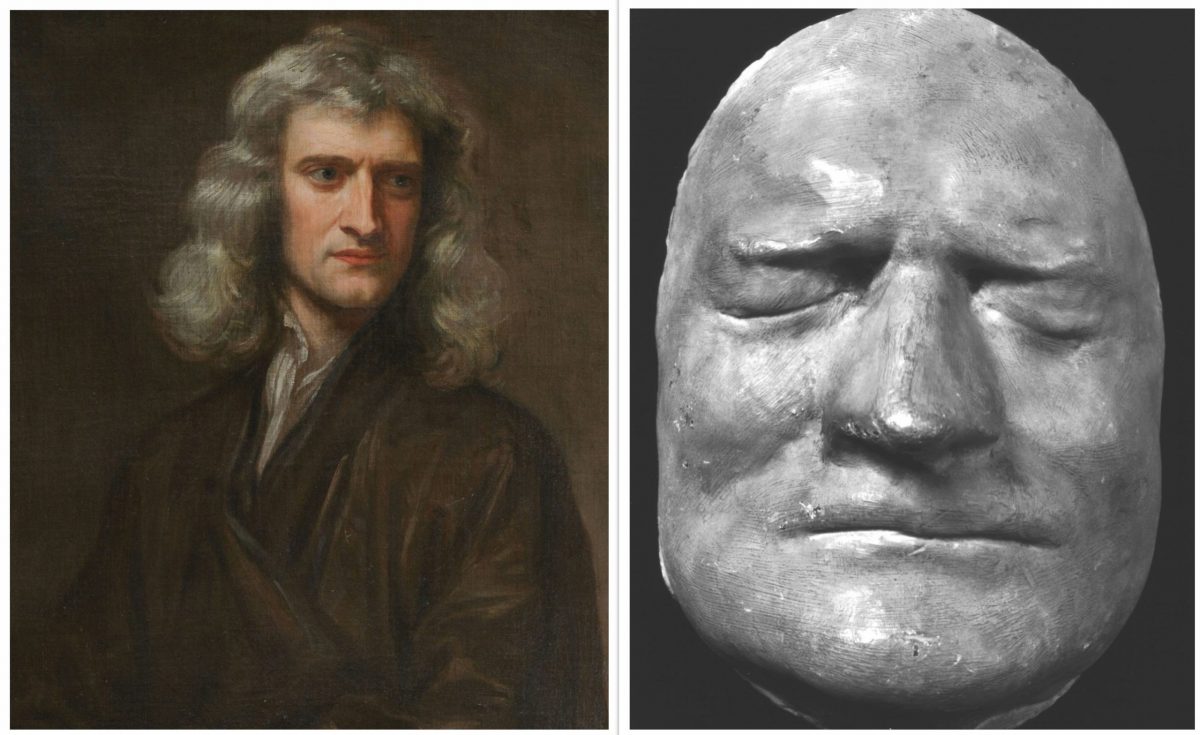
Sir Isaac Newton was an English physicist and mathematician, and arguably the greatest scientist of his era. He came up with the idea of universal gravity, which applies to all objects in all parts of the universe. Newton’s greatest work, Principia Mathematica, was published in 1687 and is considered one of the most important scientific books ever written. Shortly after his death, a death mask of Newton was recreated to ‘serve as a likeness for future sculptures.’ Scientists used a modified version of the Microsoft Kinect, a video game peripheral, to create a 3D scan of Newton’s fading visage. This new digitized face could be preserved even after the face on Newton’s death mask crumbles away.
Philip II of Macedon
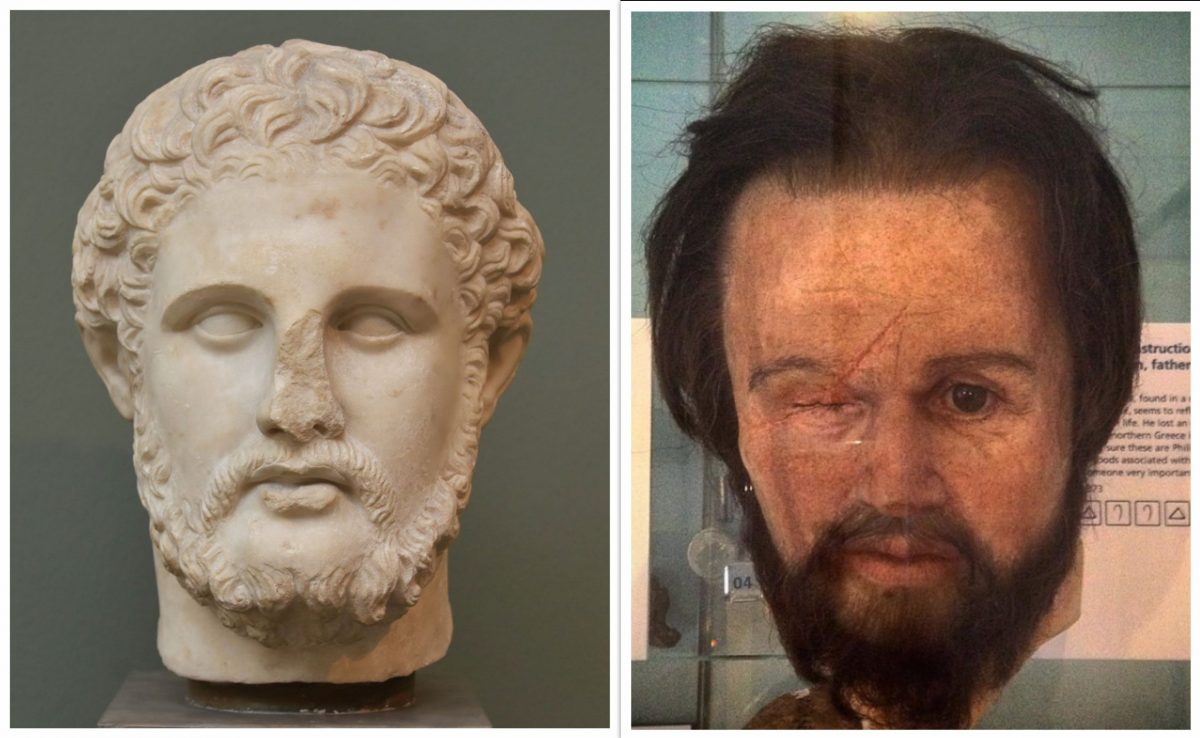
King Phillip II of Macedon reigned as King of the ancient Greek kingdom of Macedon from 359 BC until he was assassinated in 336 BC. He was a member of the Argead dynasty. His father, Amyntas III, died when Phillip II was just a child. His older brothers, Alexander II and Periddiccas III, also passed away while he was still young, so Phillip II ascended to the throne at a young age. Although there is little physical description of Philip II in history, scientists have made a facial reconstruction from a skull found in a rich tomb at Vergina in northern Greece. The skull seems to reflect the injuries that Philip suffered during his life, including the loss of an eye. We can’t be absolutely sure these are Philip’s remains, but the rich grave goods suggest that this was someone very important.
Aaron Burr
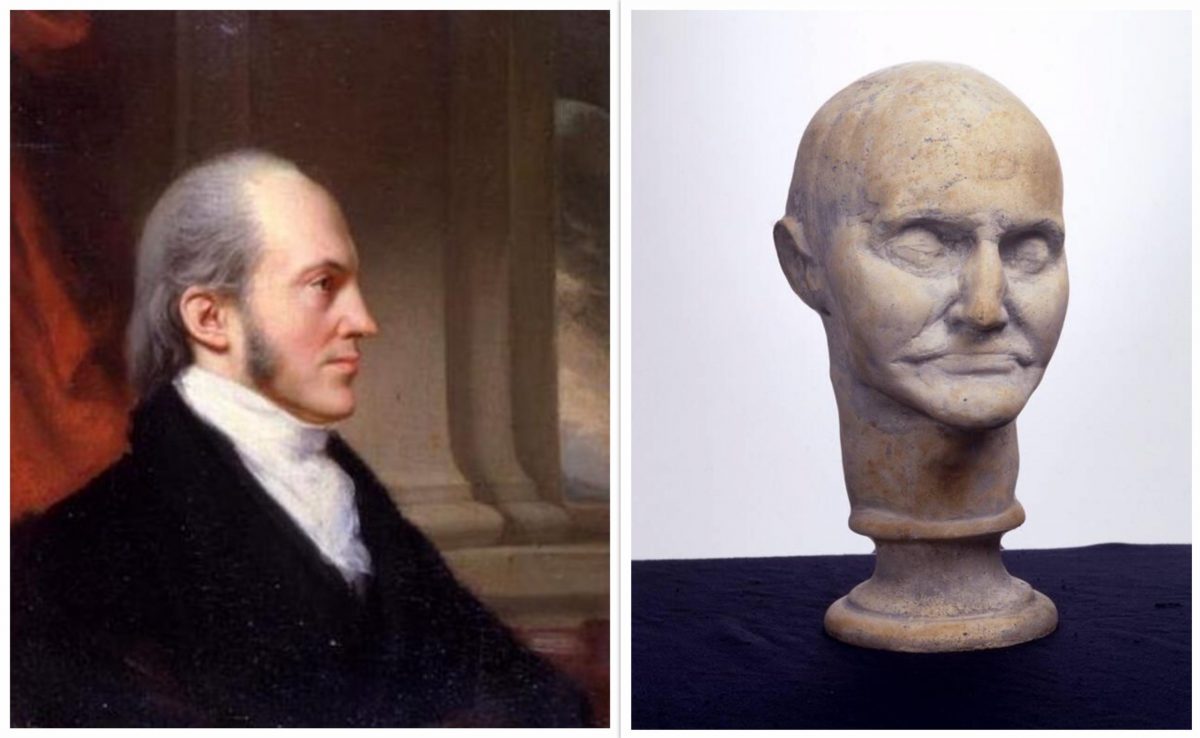
Aaron Burr served as a US senator for New York for two terms beginning in 1791. In 1800, he ran unsuccessfully for president of the United States, and became vice president instead. During a duel with Alexander Hamilton in 1804, Burr killed his former political rival by shooting him in the chest. He was charged with conspiracy soon afterward, which ended his political career. The former senator fled to France and lived abroad until his death three years later. Author and essayist Laurence Hutton was a well-known collector of death masks, which he donated to Princeton University. He often told stories about the collection, but only a few of them were verified. One of these was the mask of Aaron Burr.
Oliver Cromwell
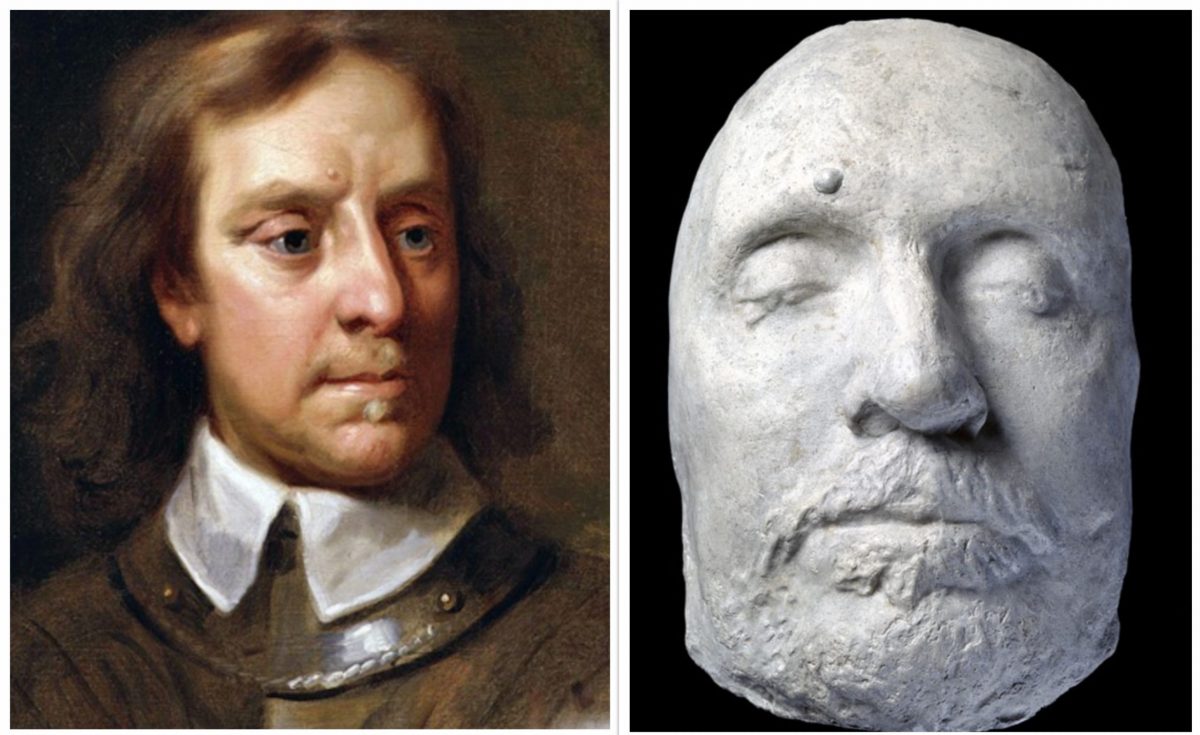
Oliver Cromwell was a political and military leader in 17th century England who served as Lord Protector of the Commonwealth, or head of state, from 1653 to his death in 1658. He was known for being ruthless in battle and twice led successful efforts to remove the British monarch from power. He is also credited by others with helping lead Great Britain toward a constitutional government. This plaster copy of the death mask of Cromwell, made by Gerrit van Honthorst in 1658, is a good illustration of Andrew Marvell’s eyewitness account.